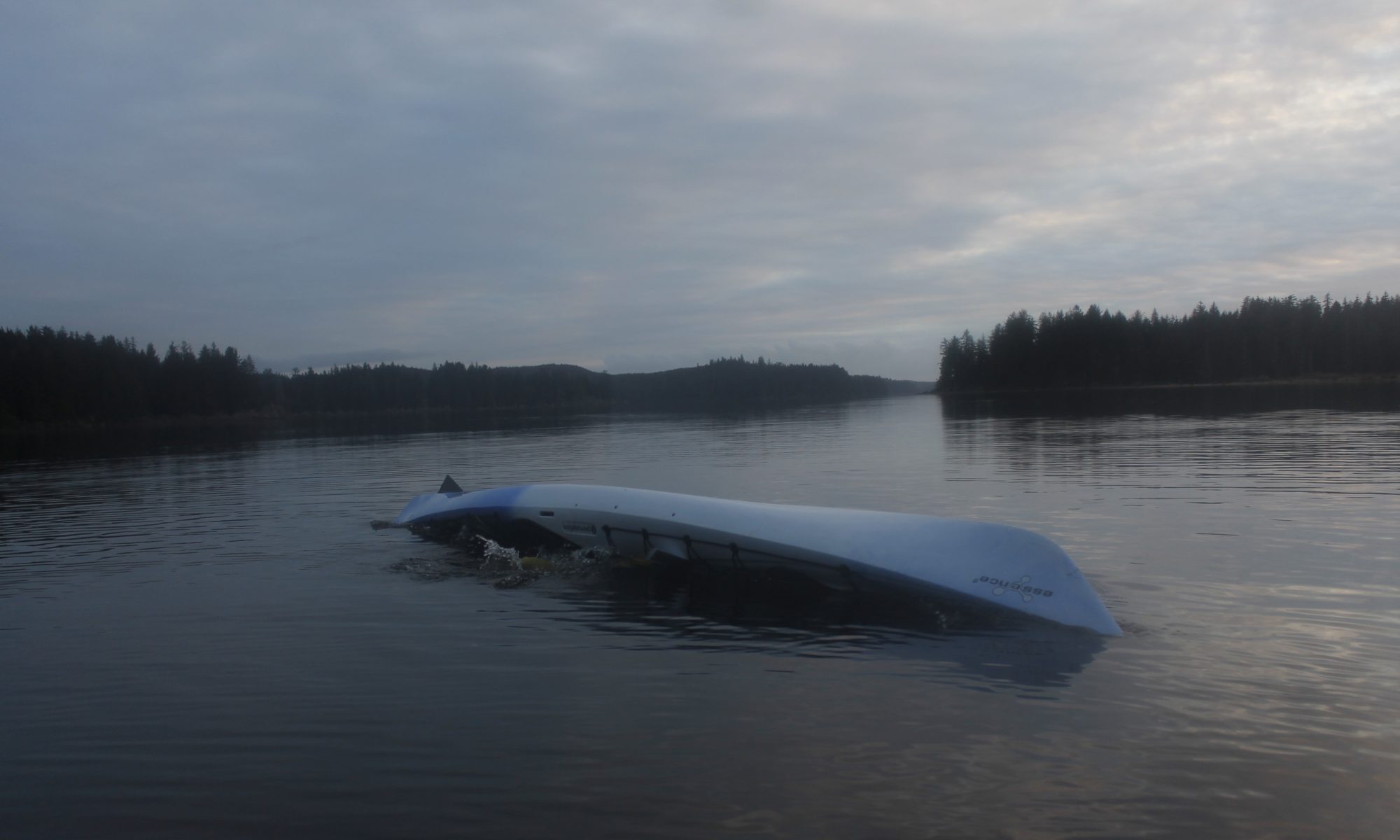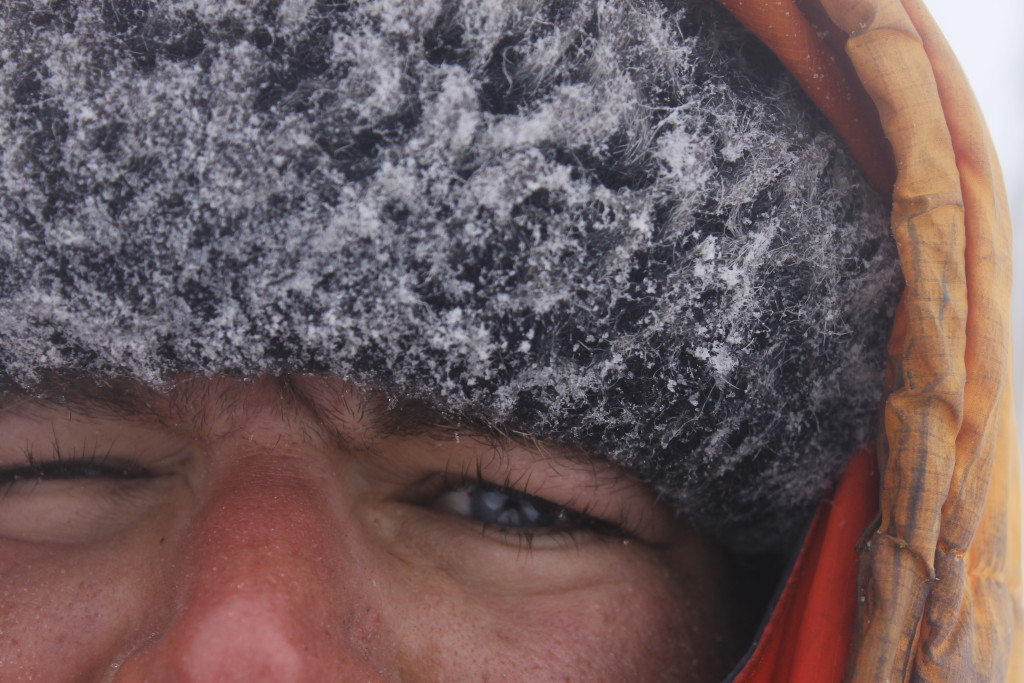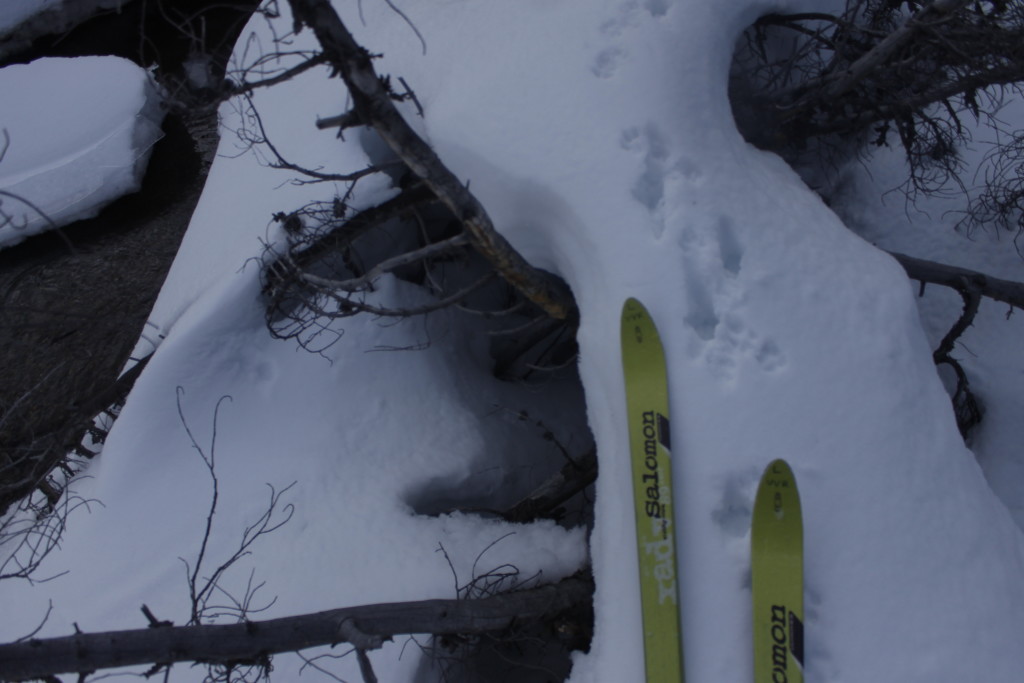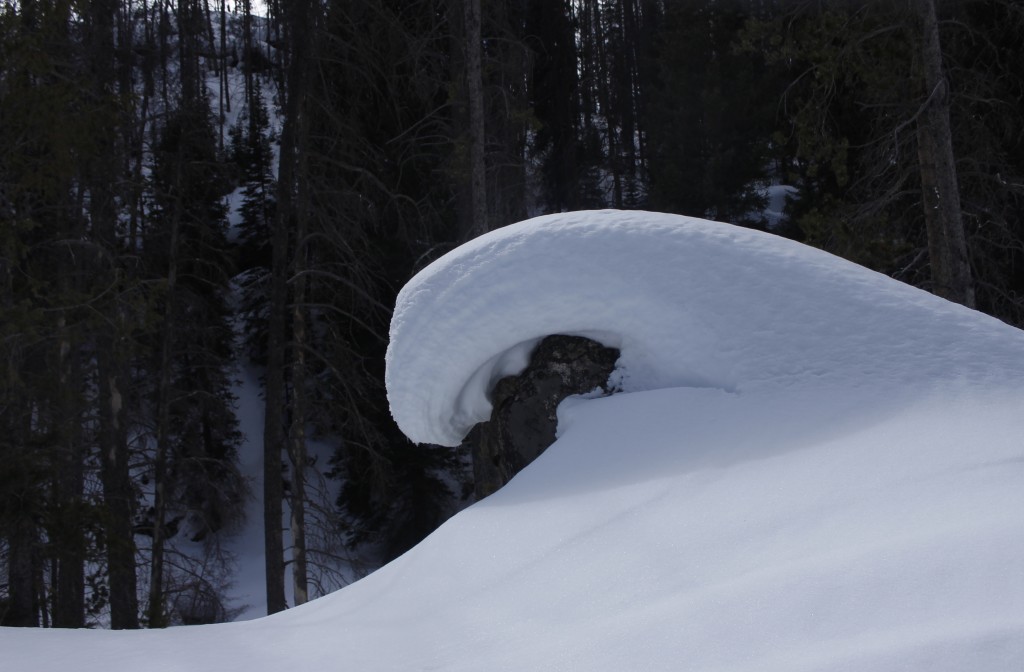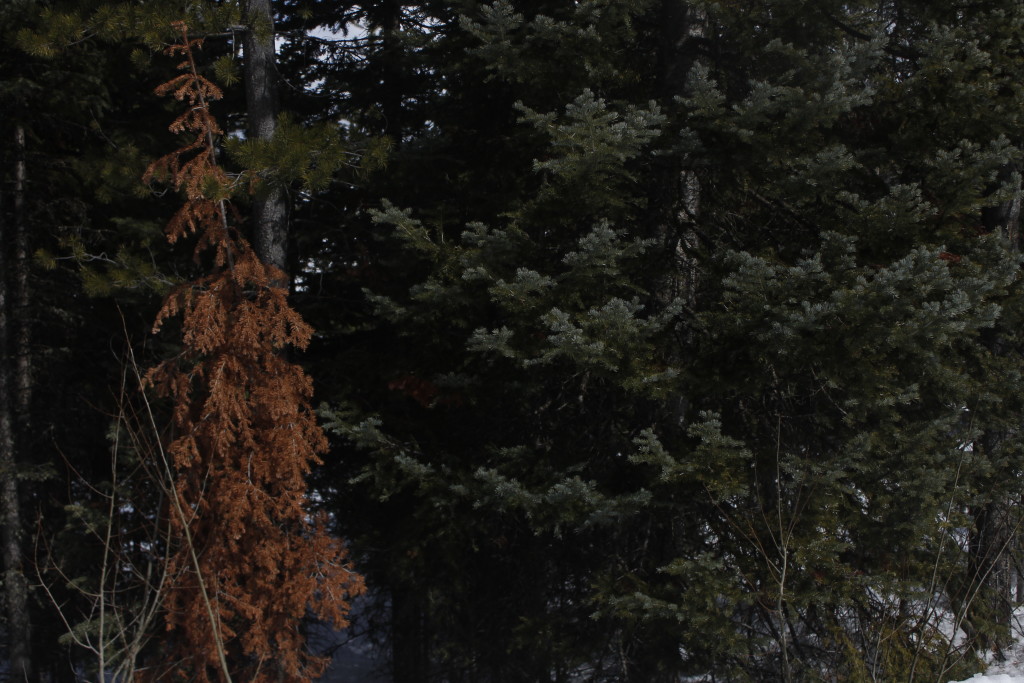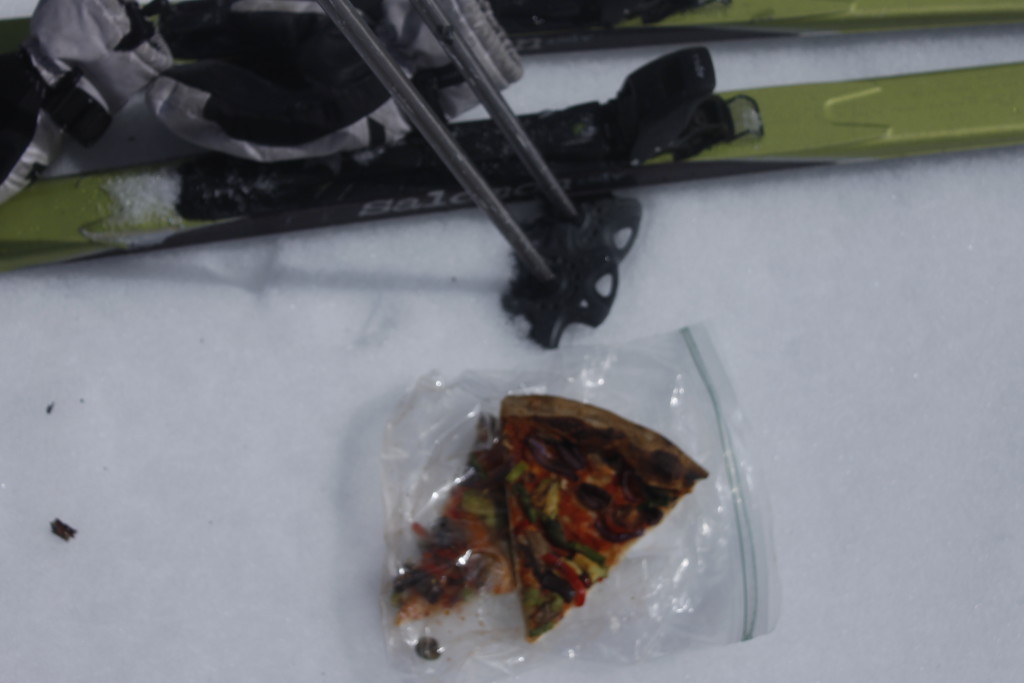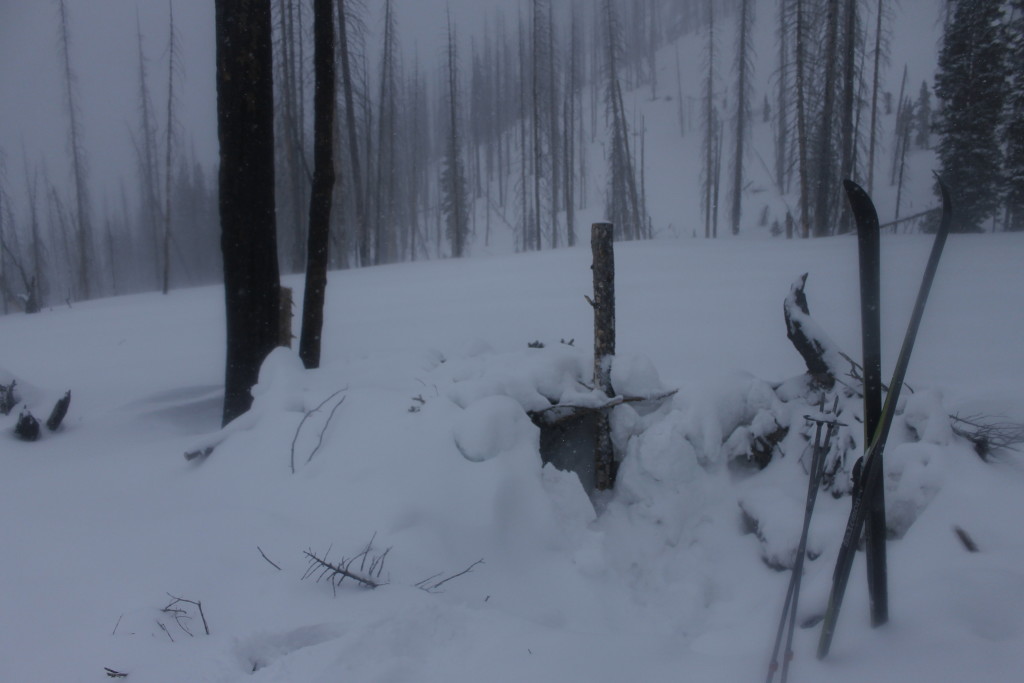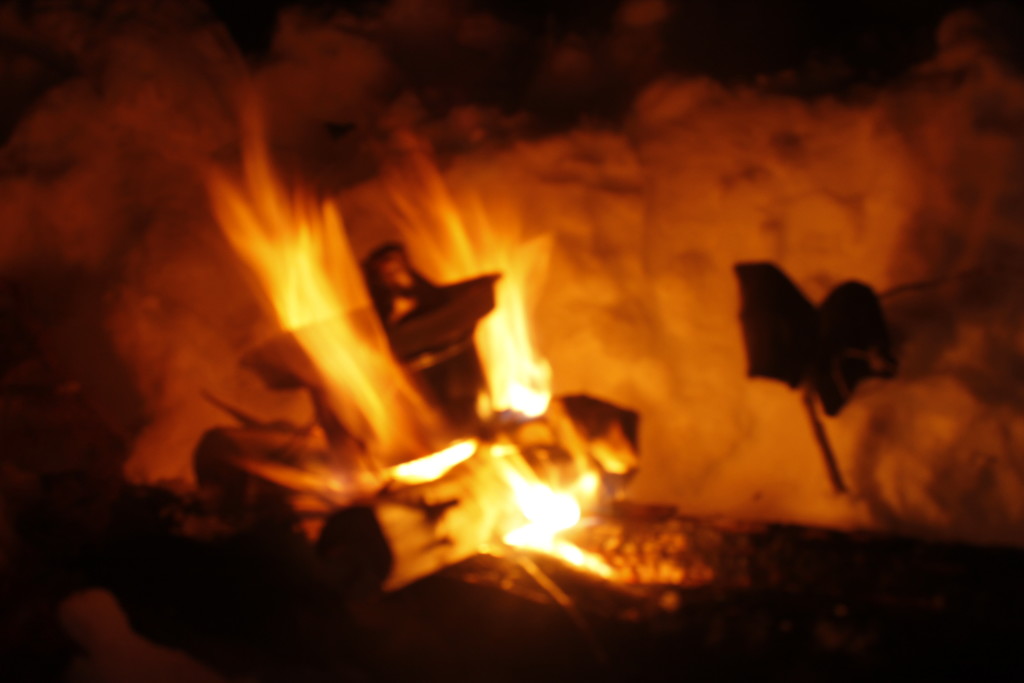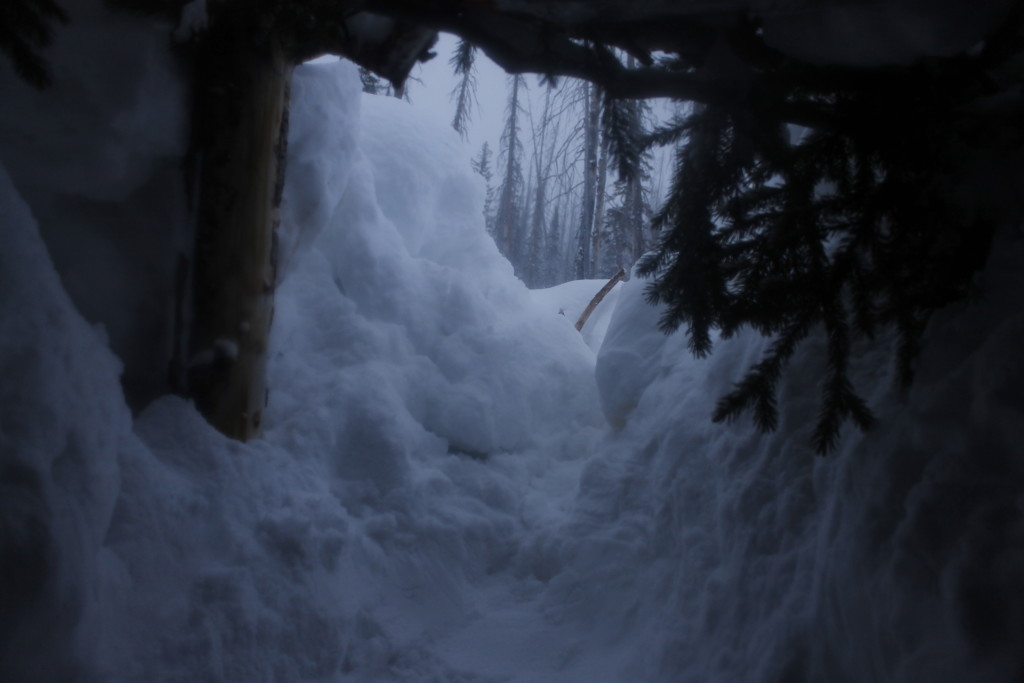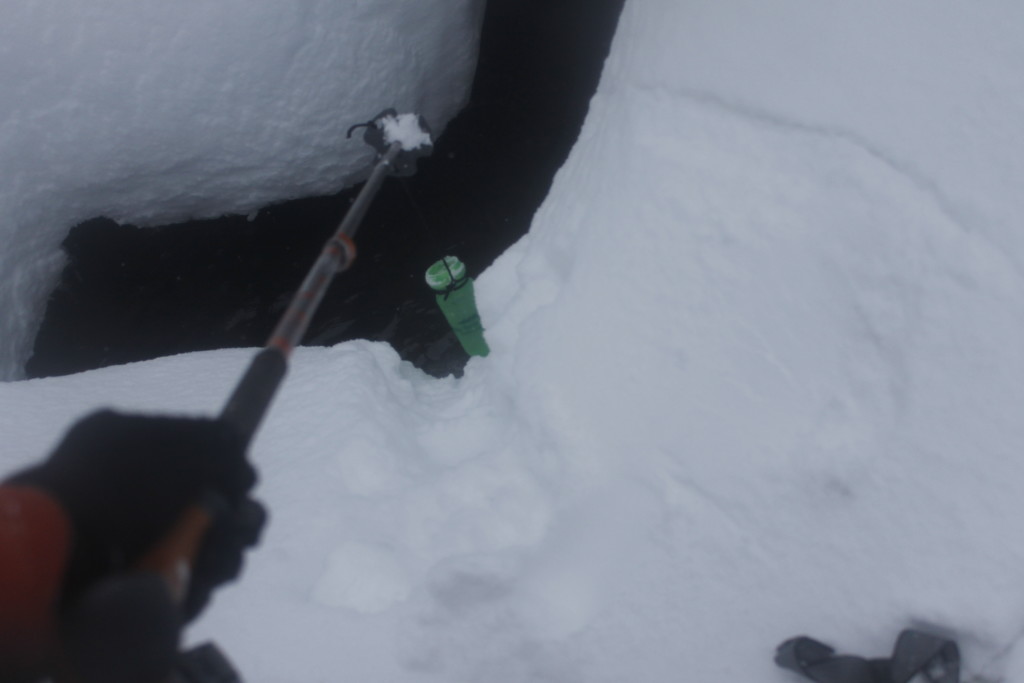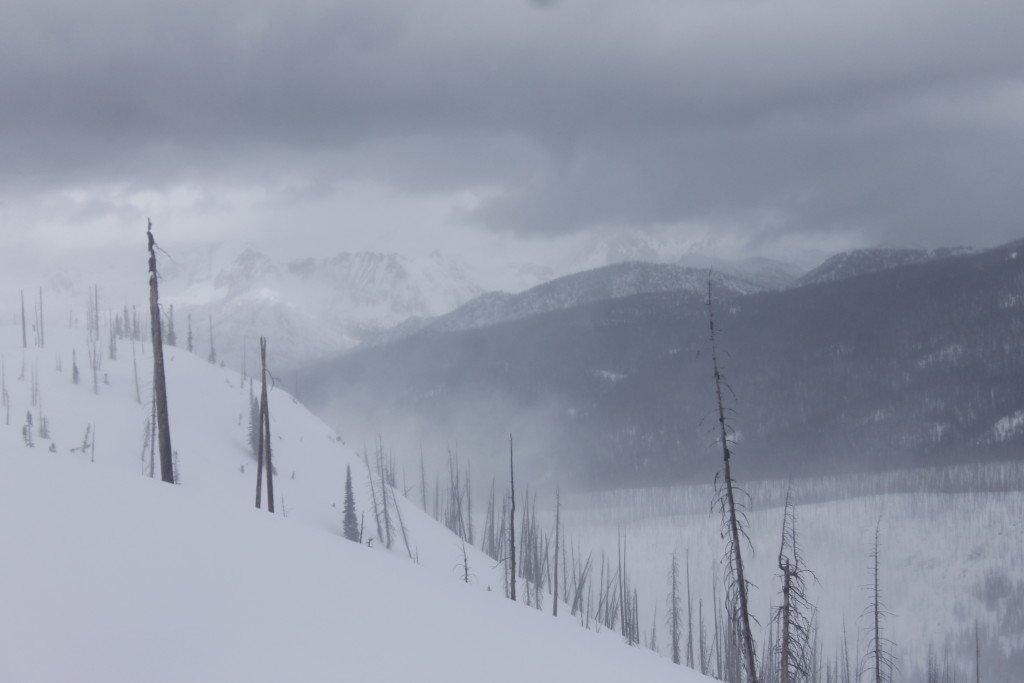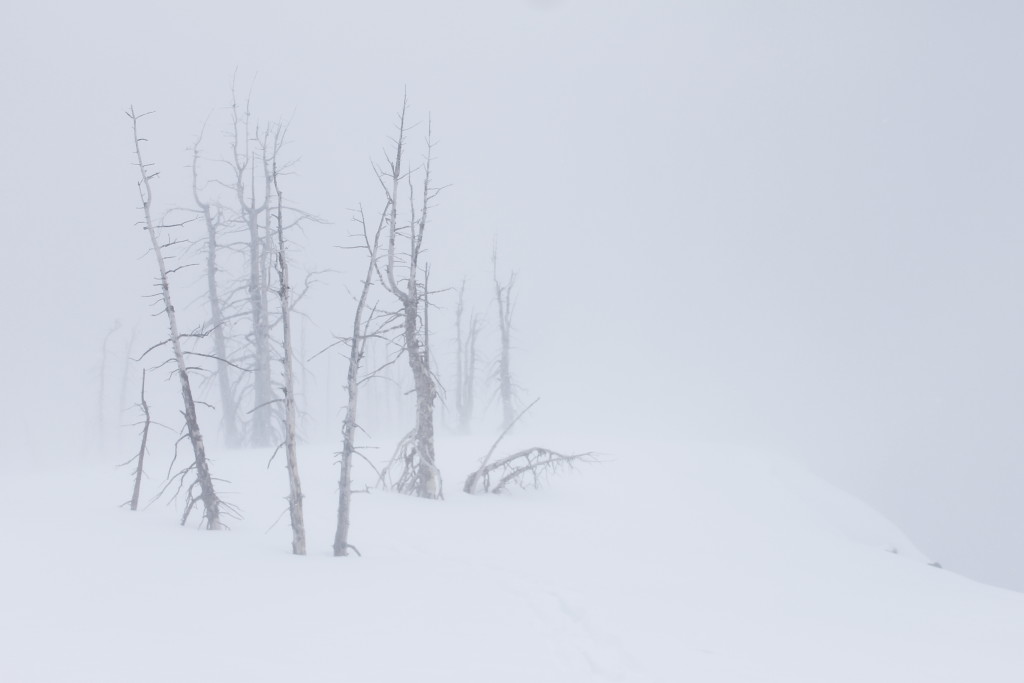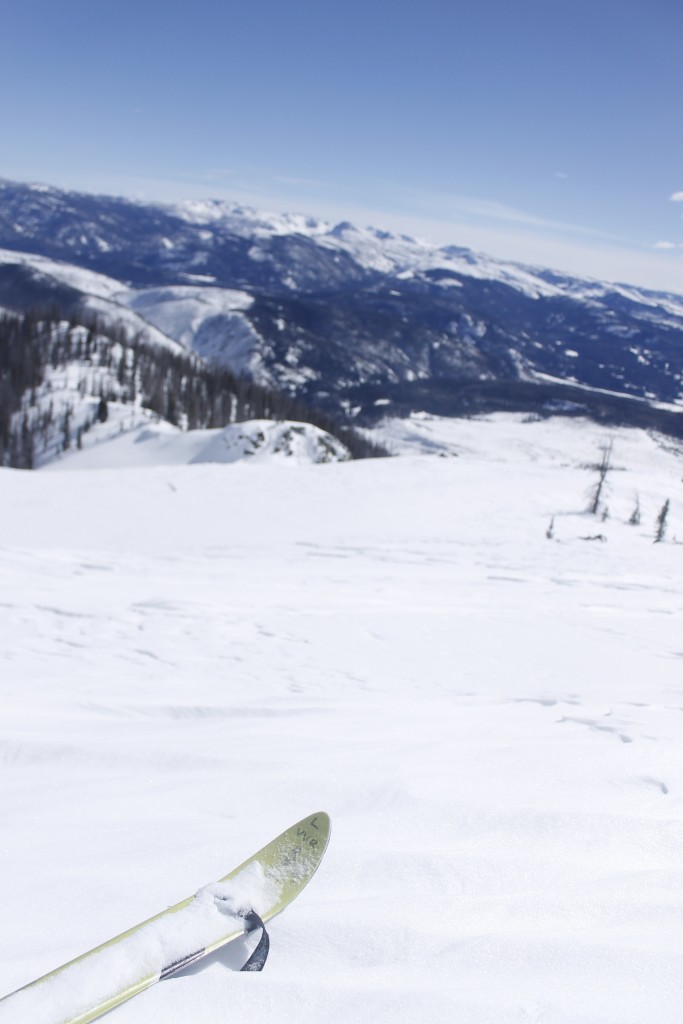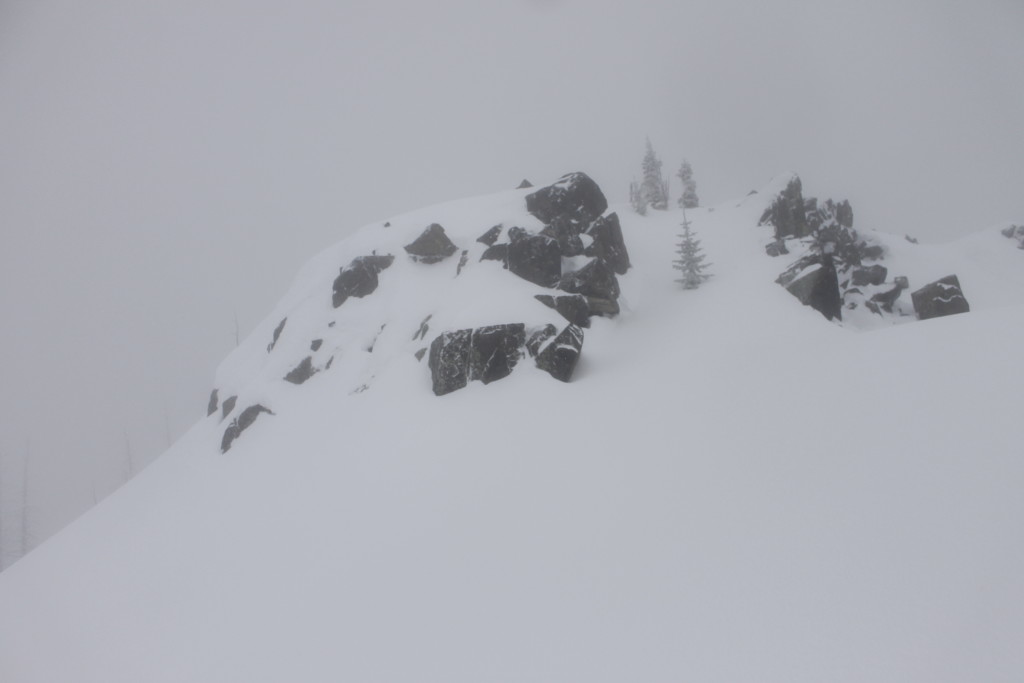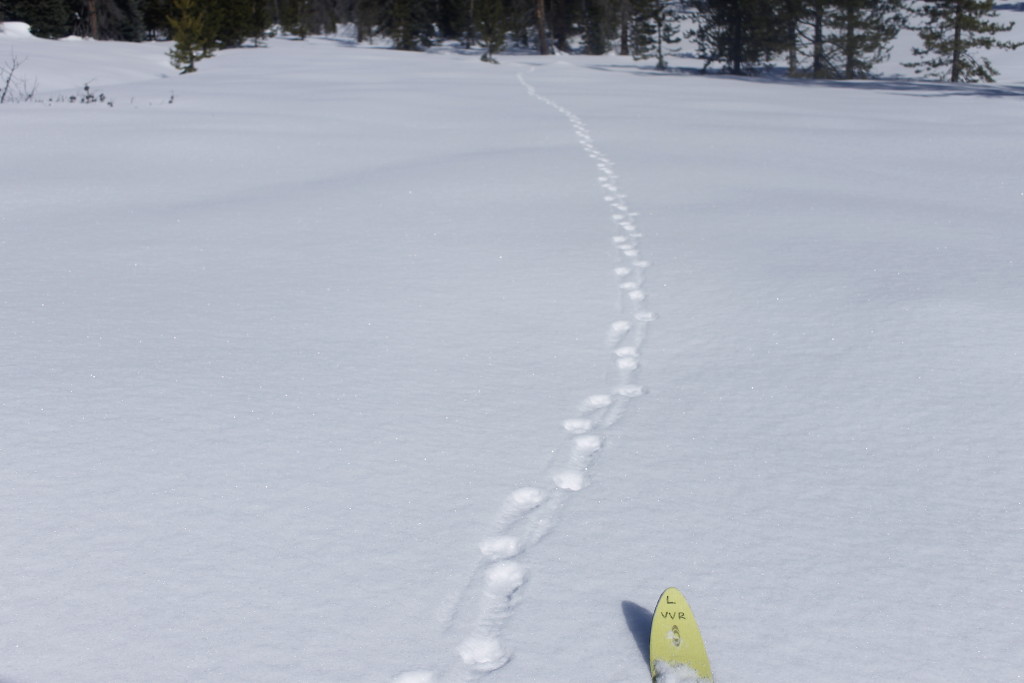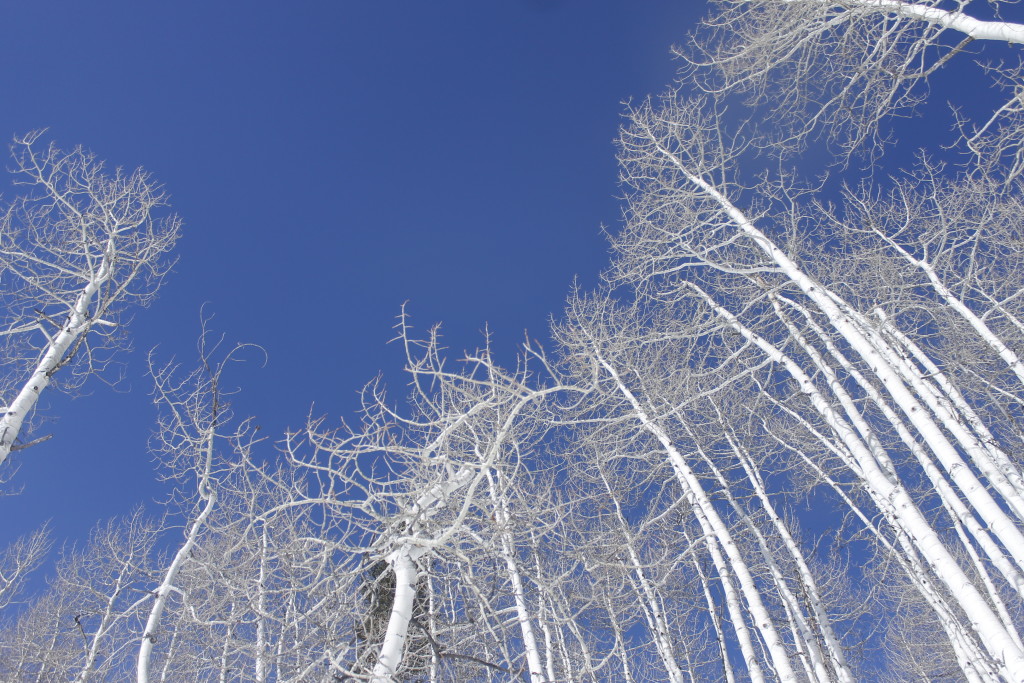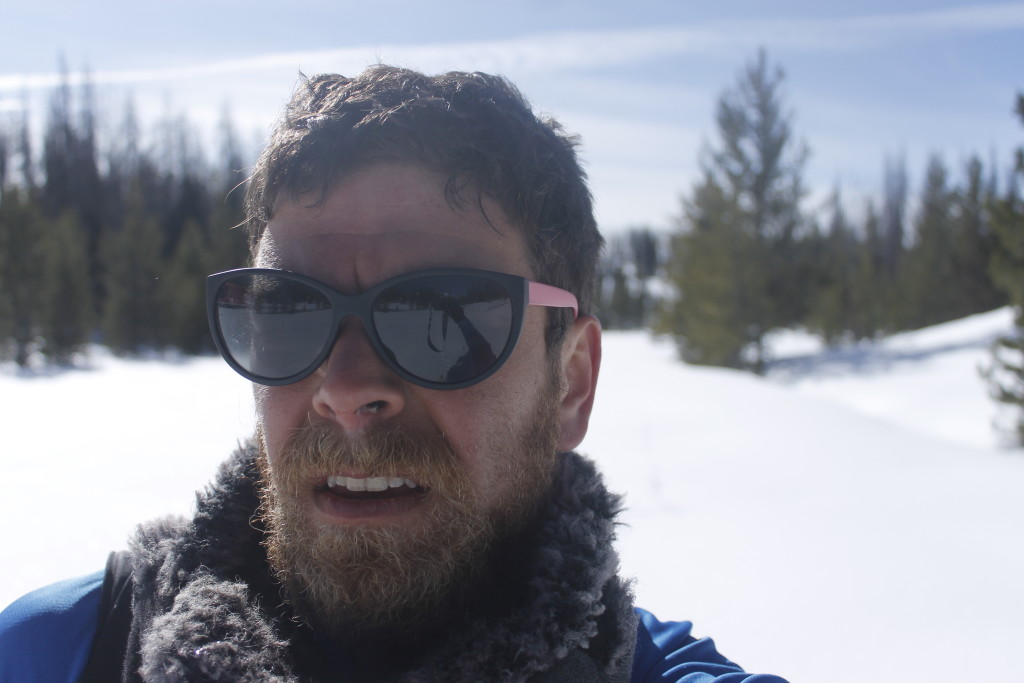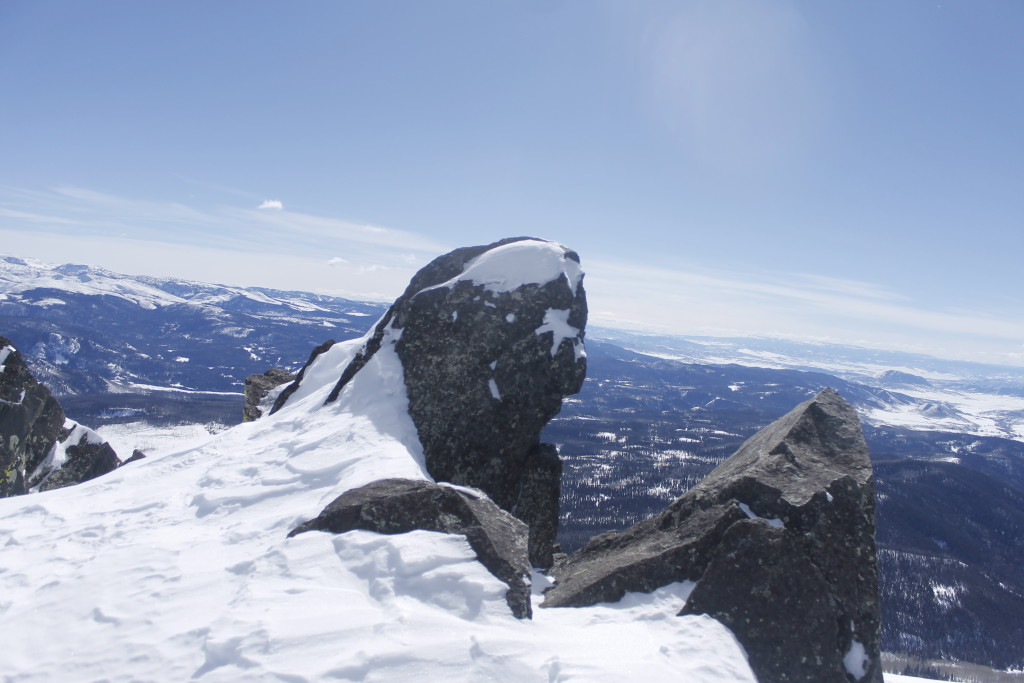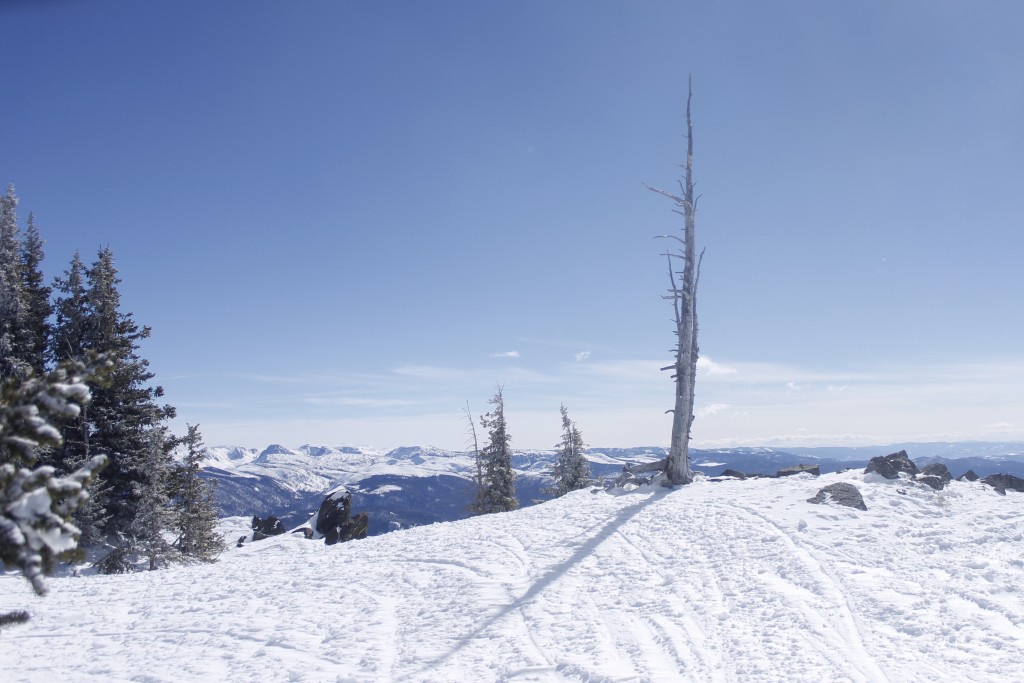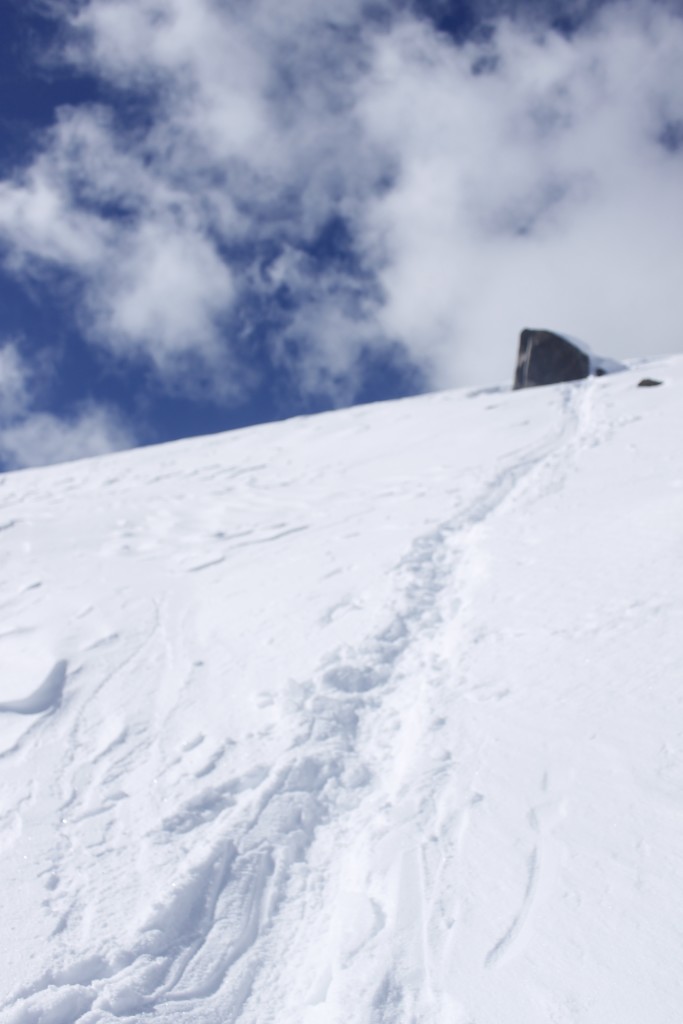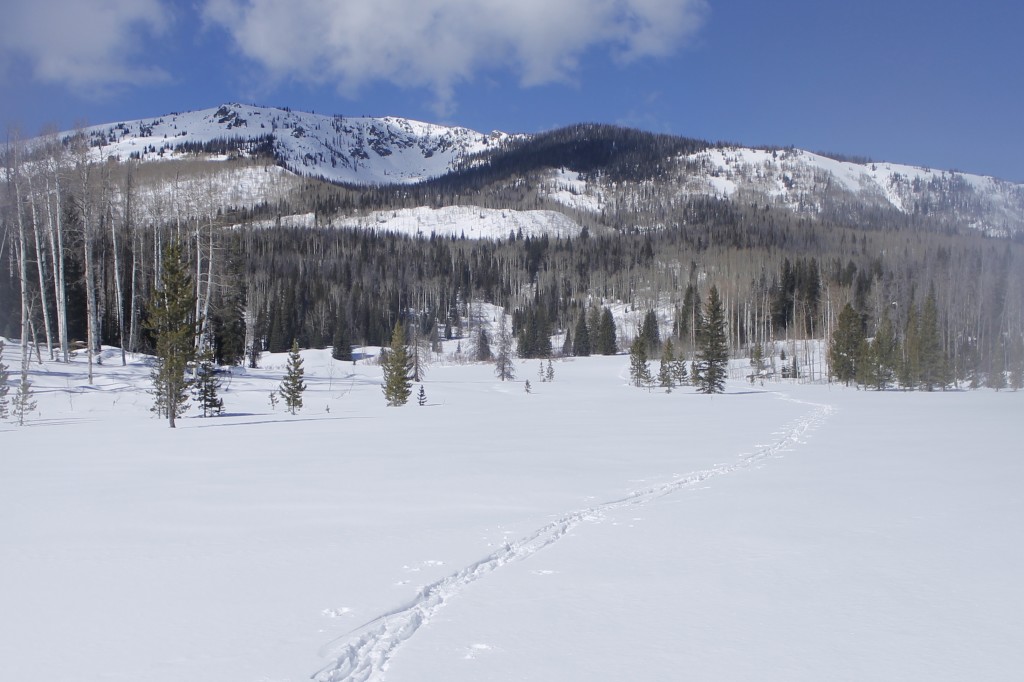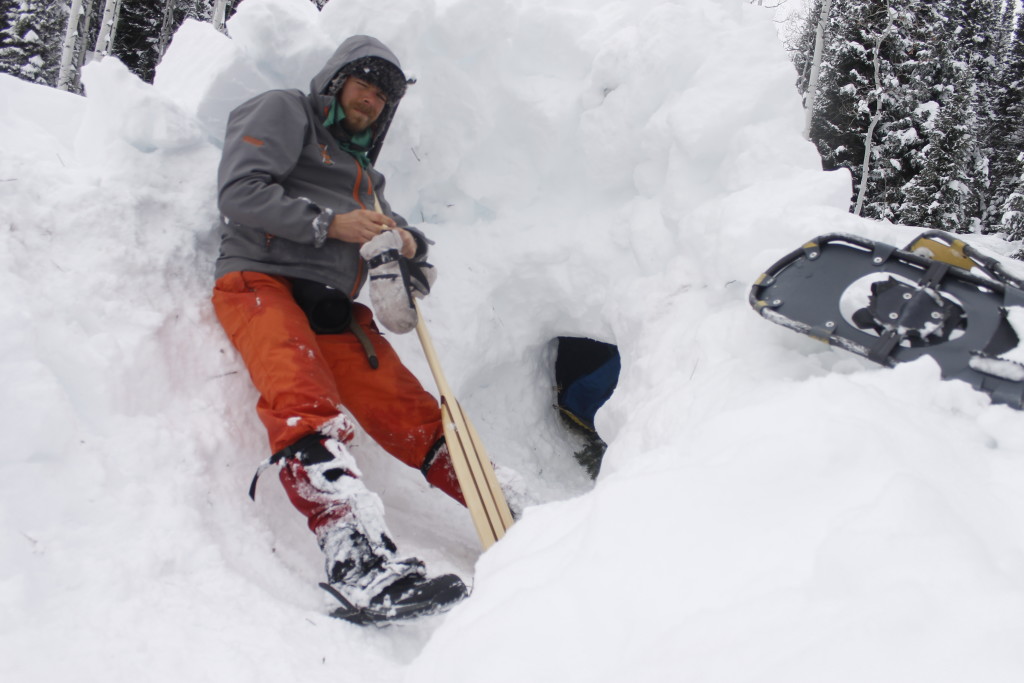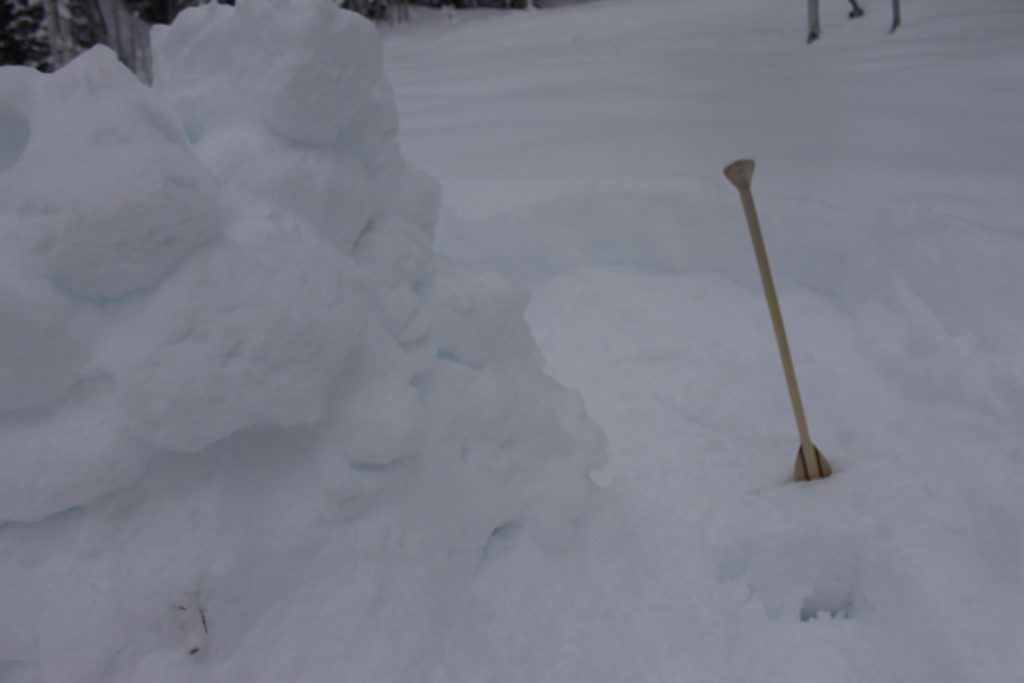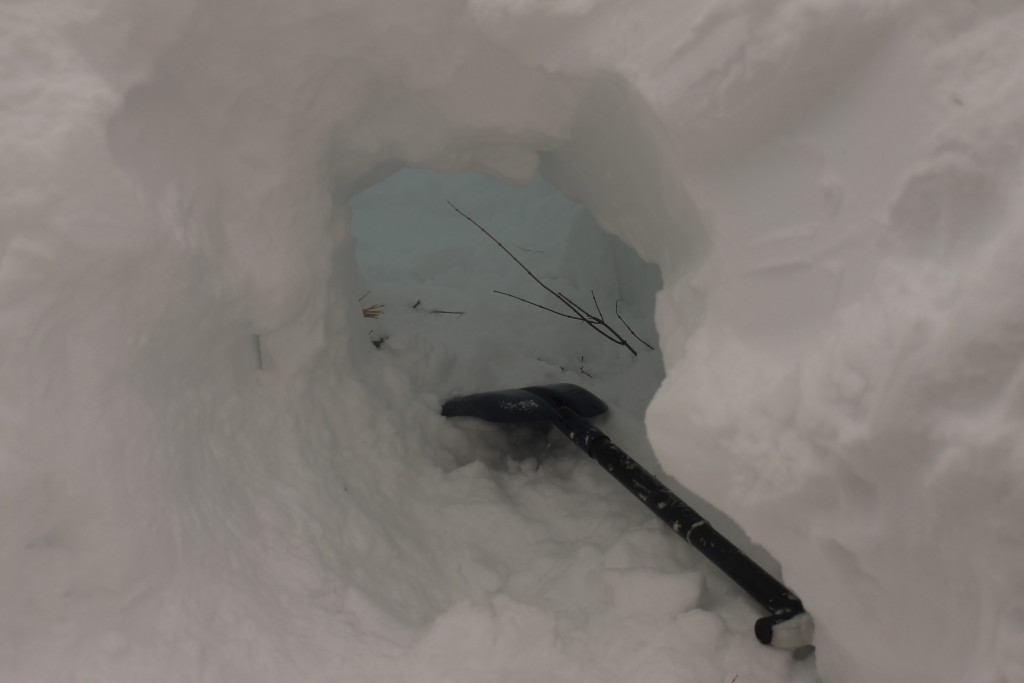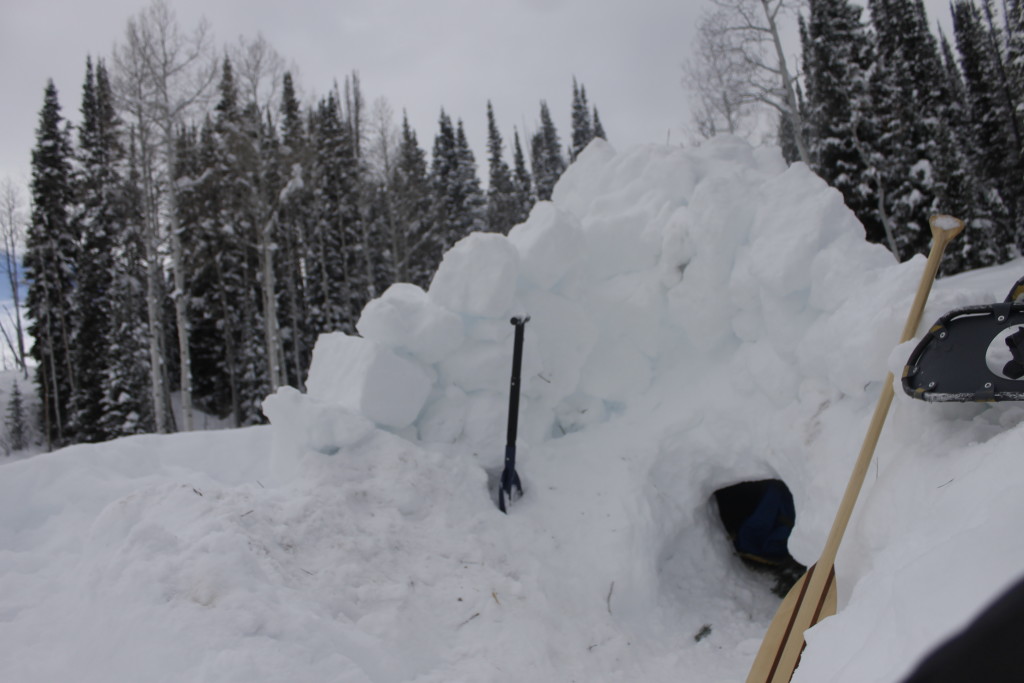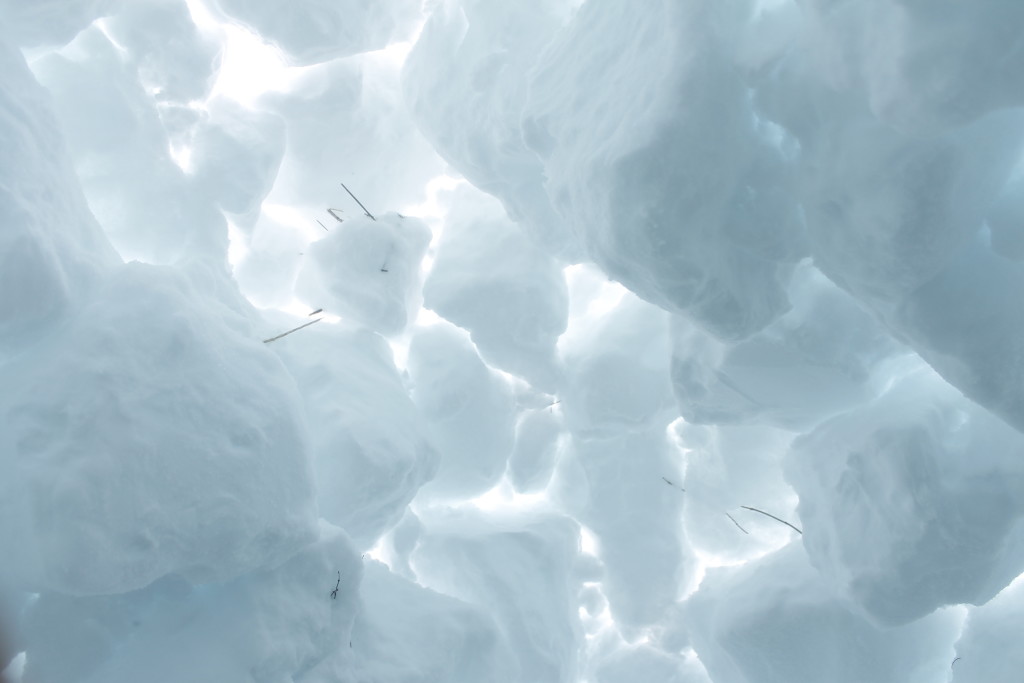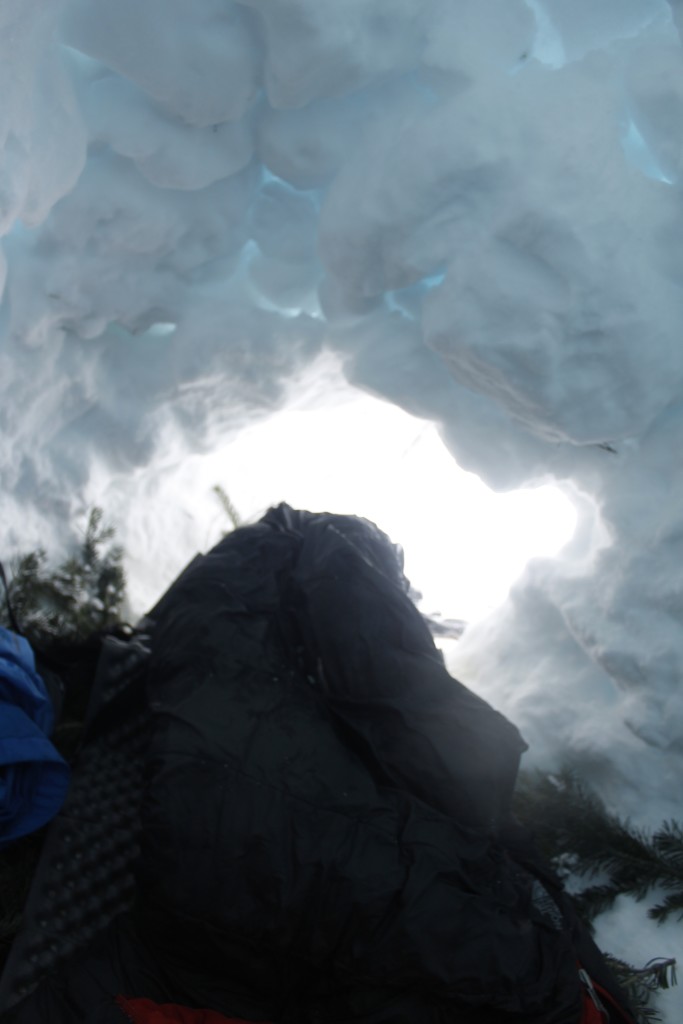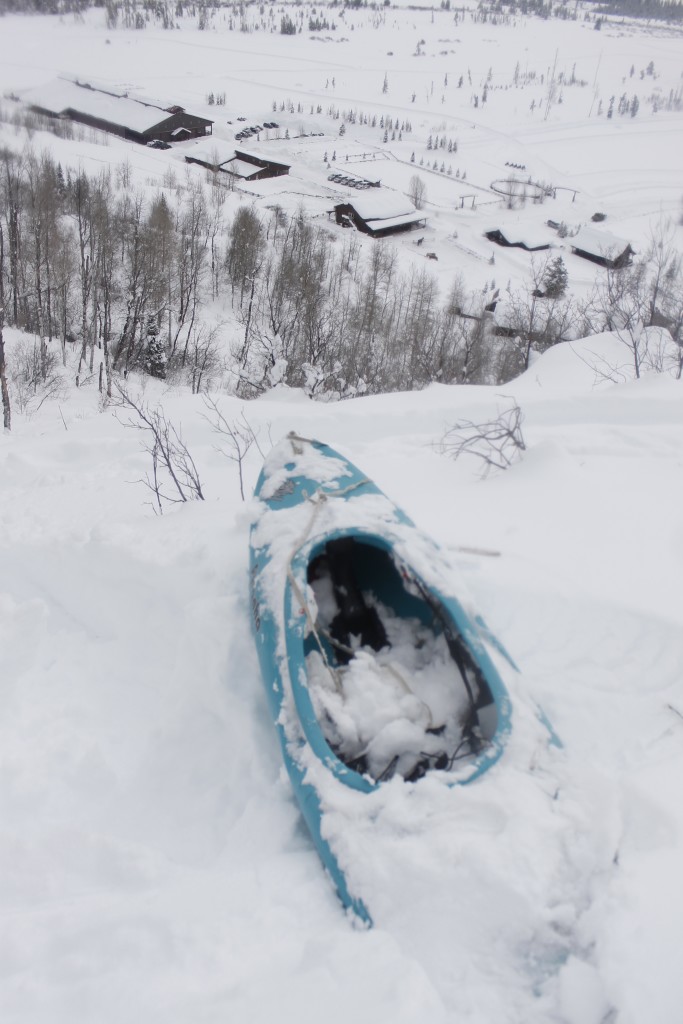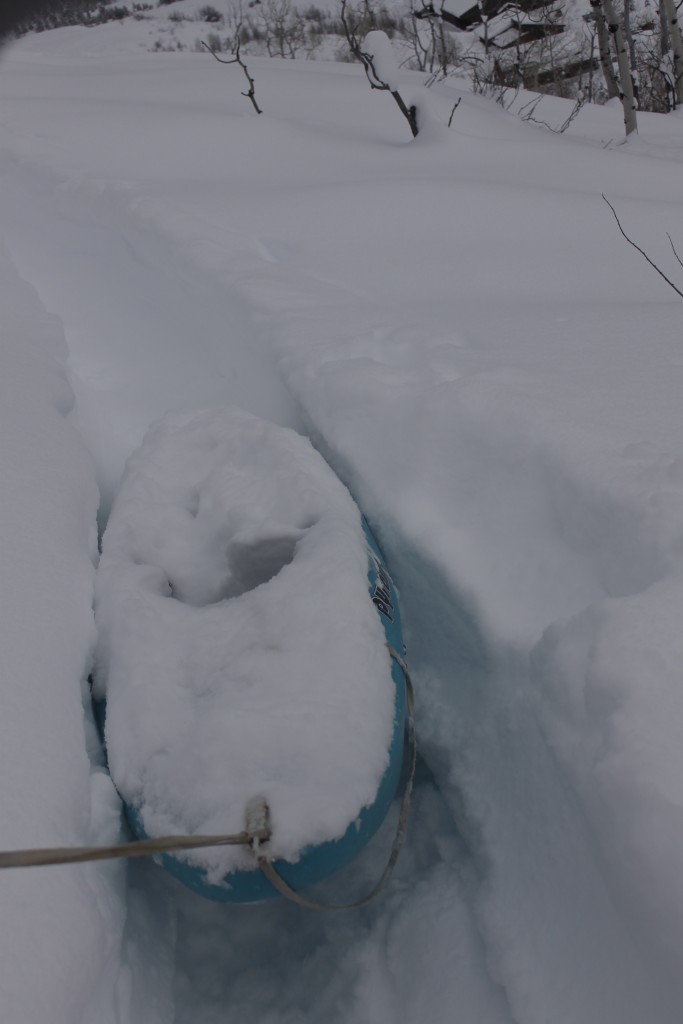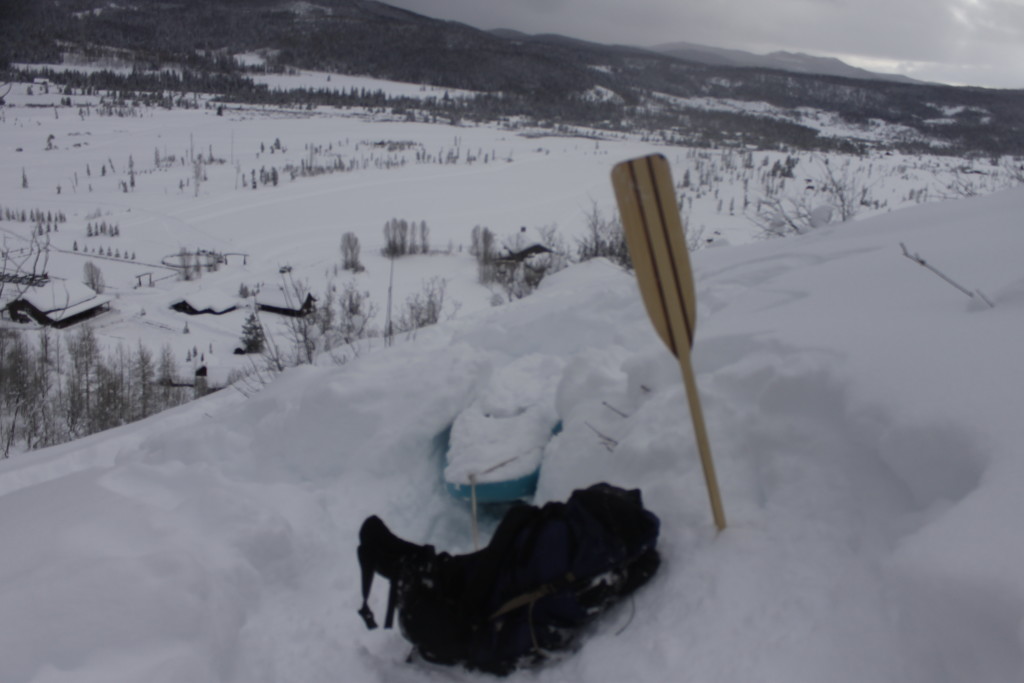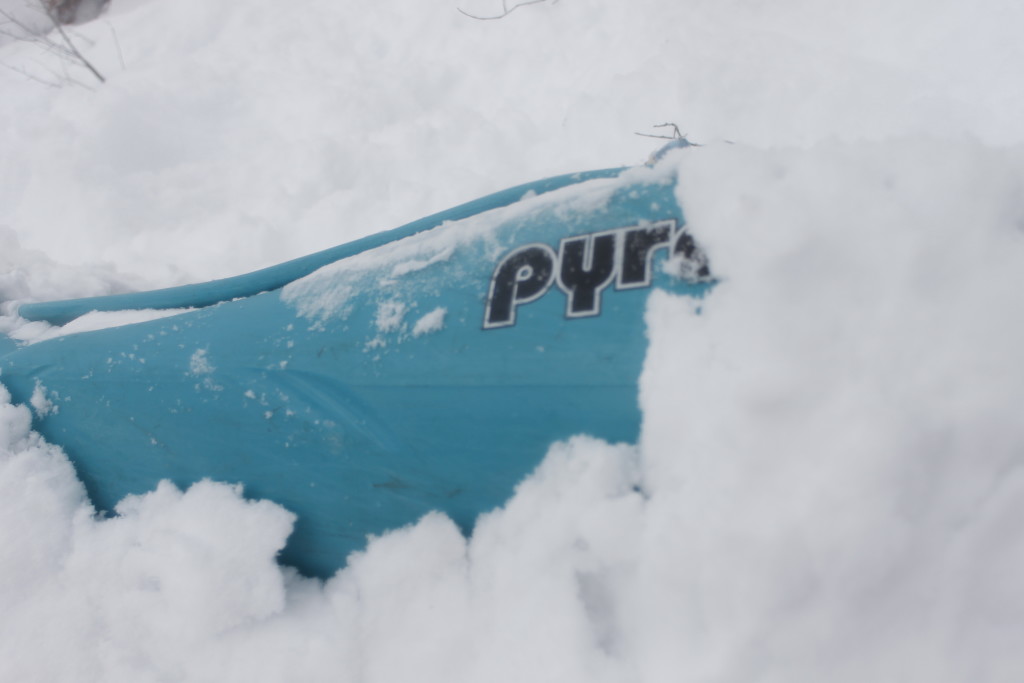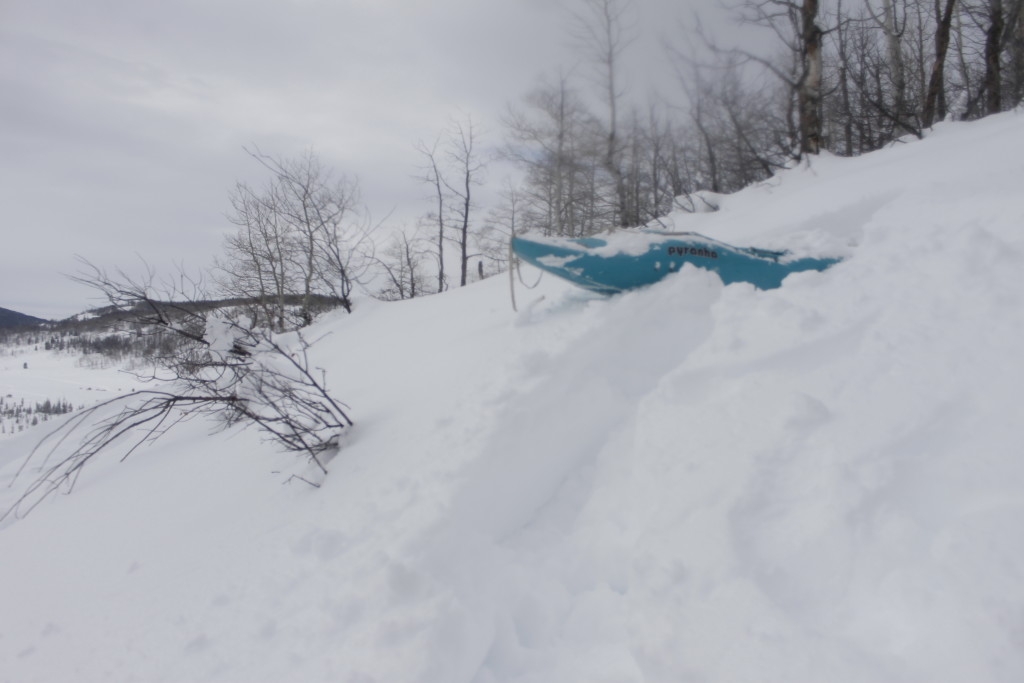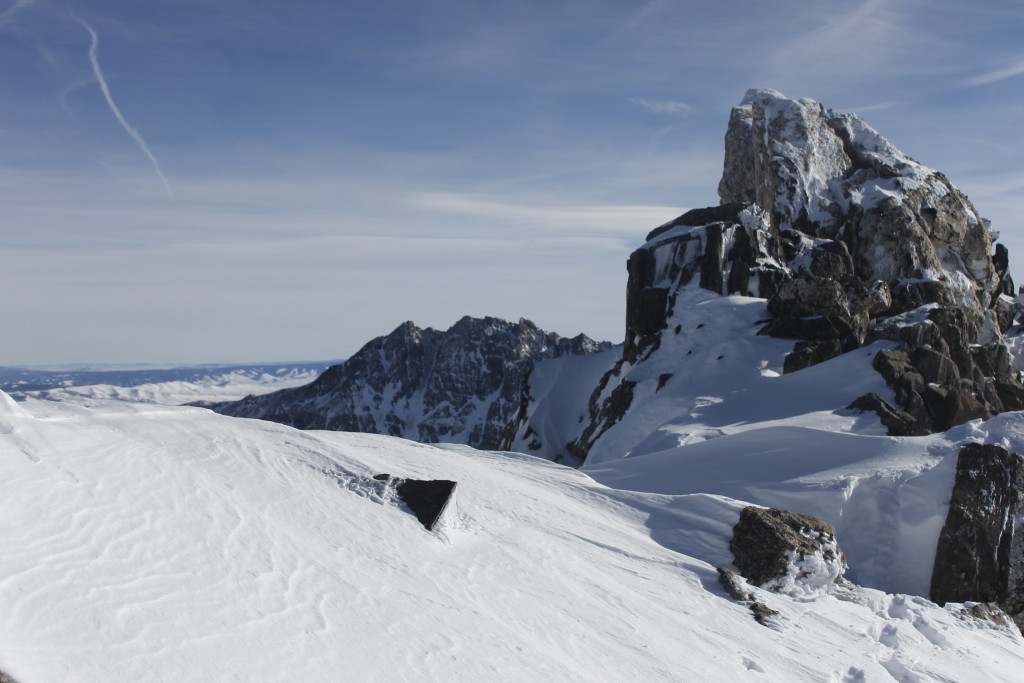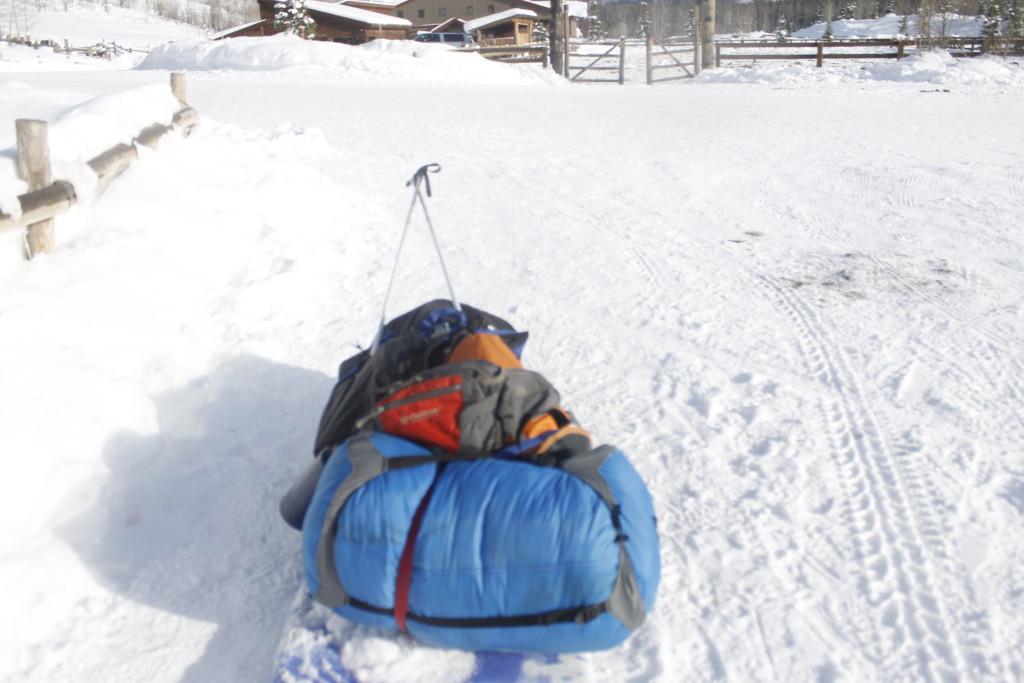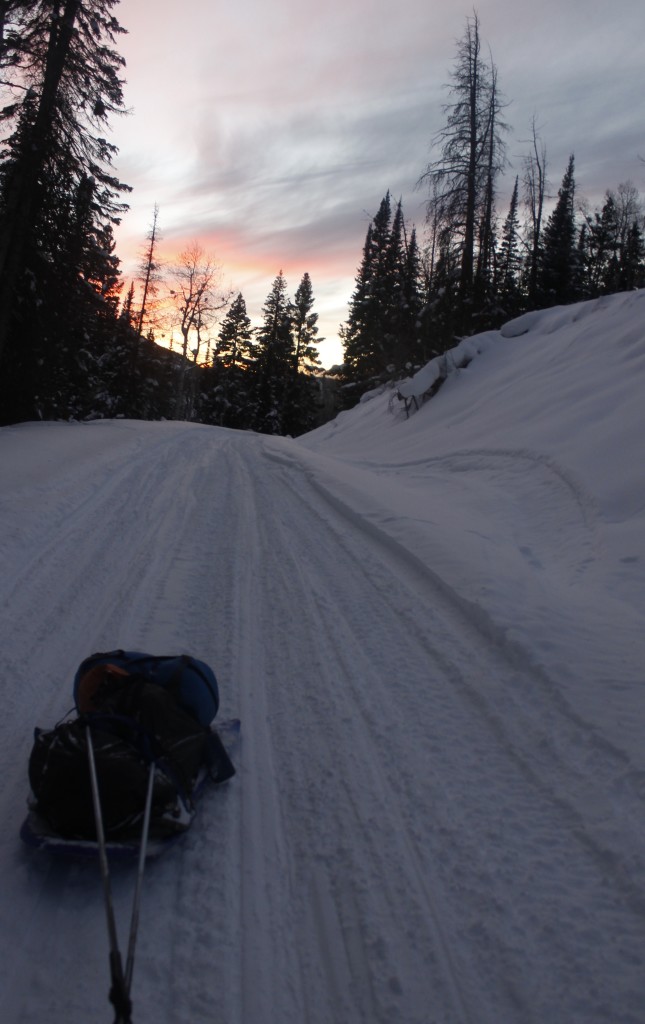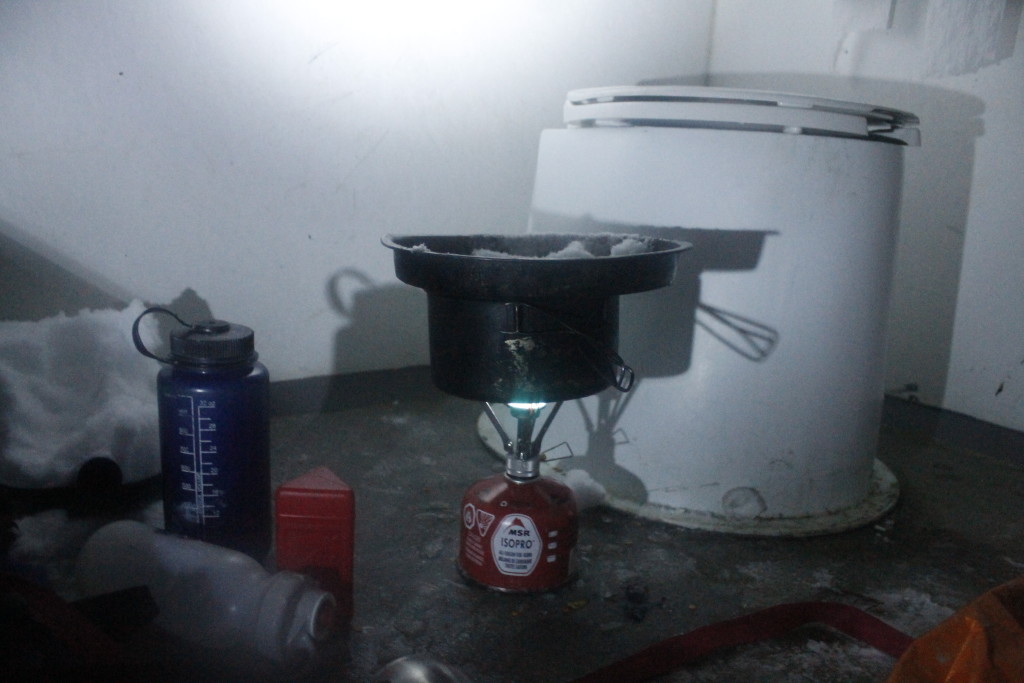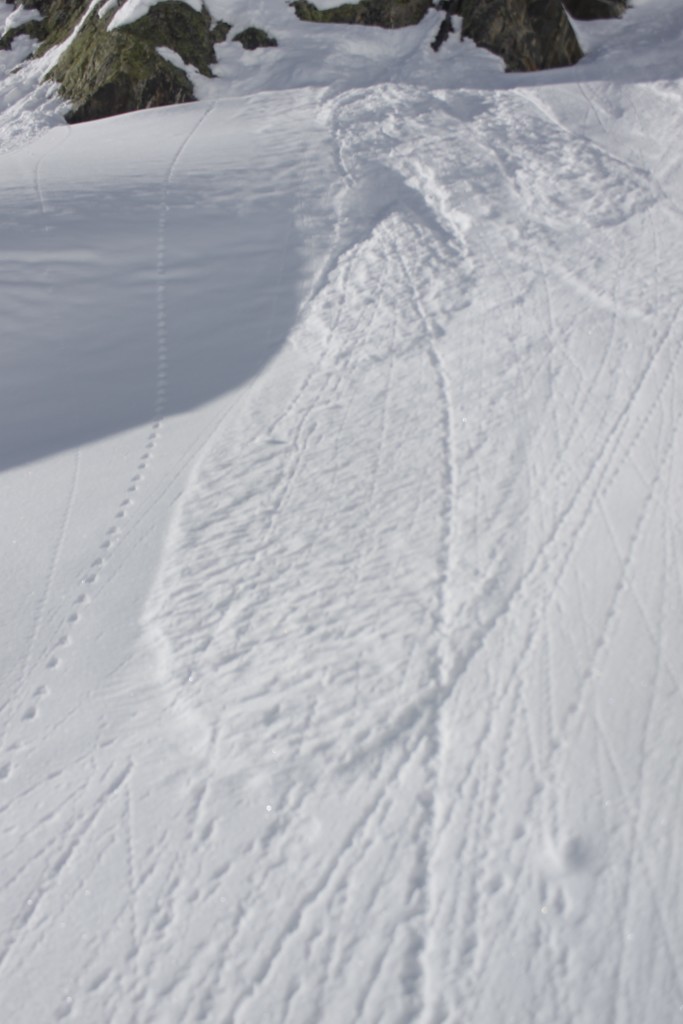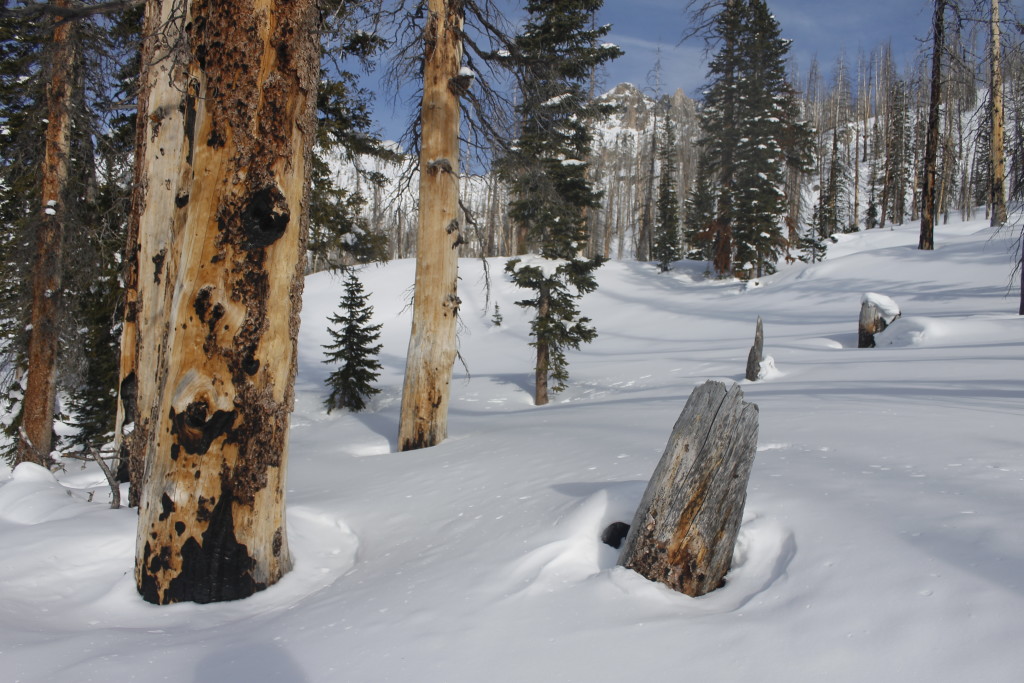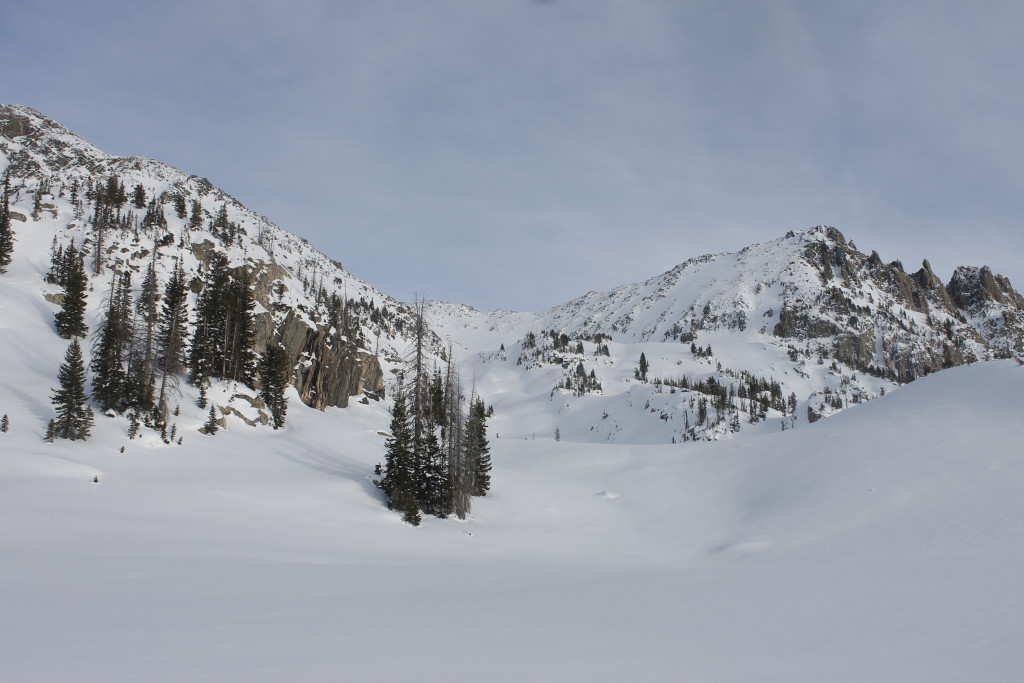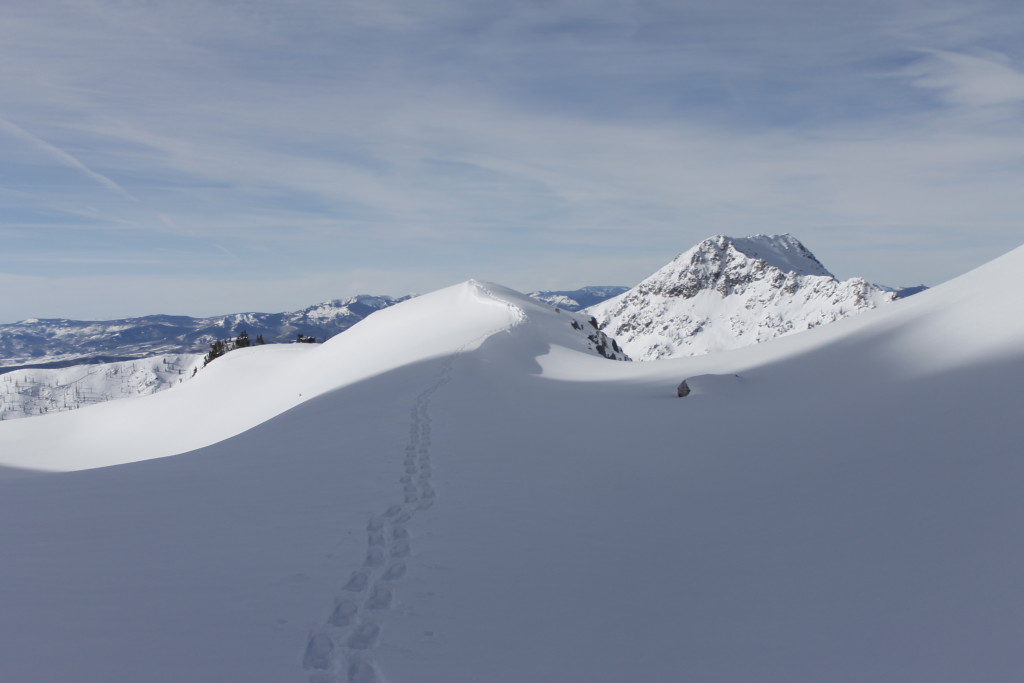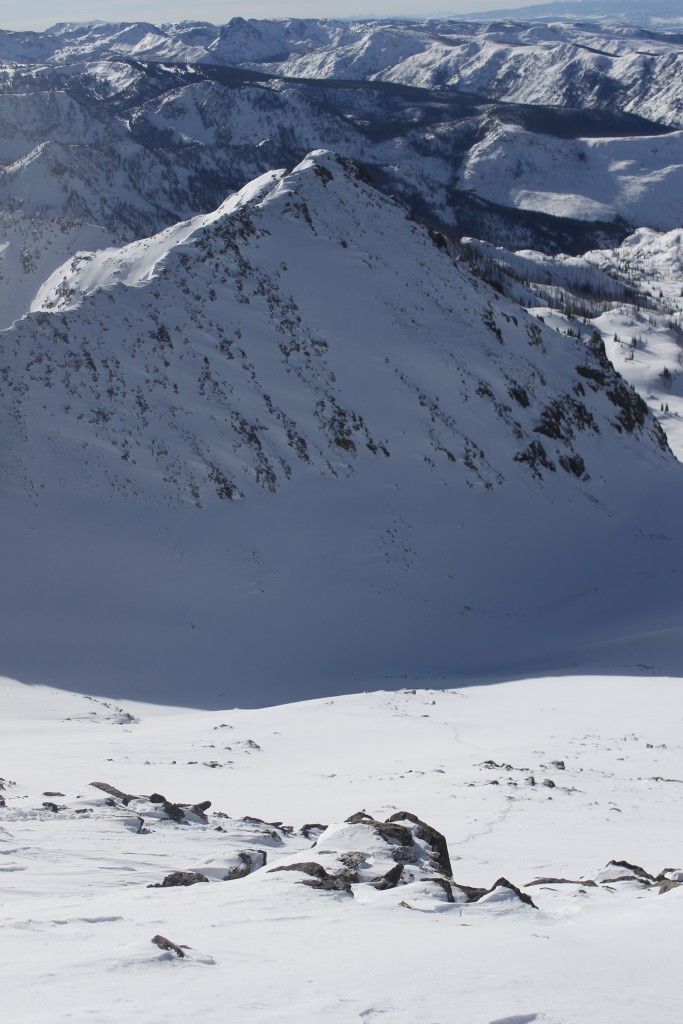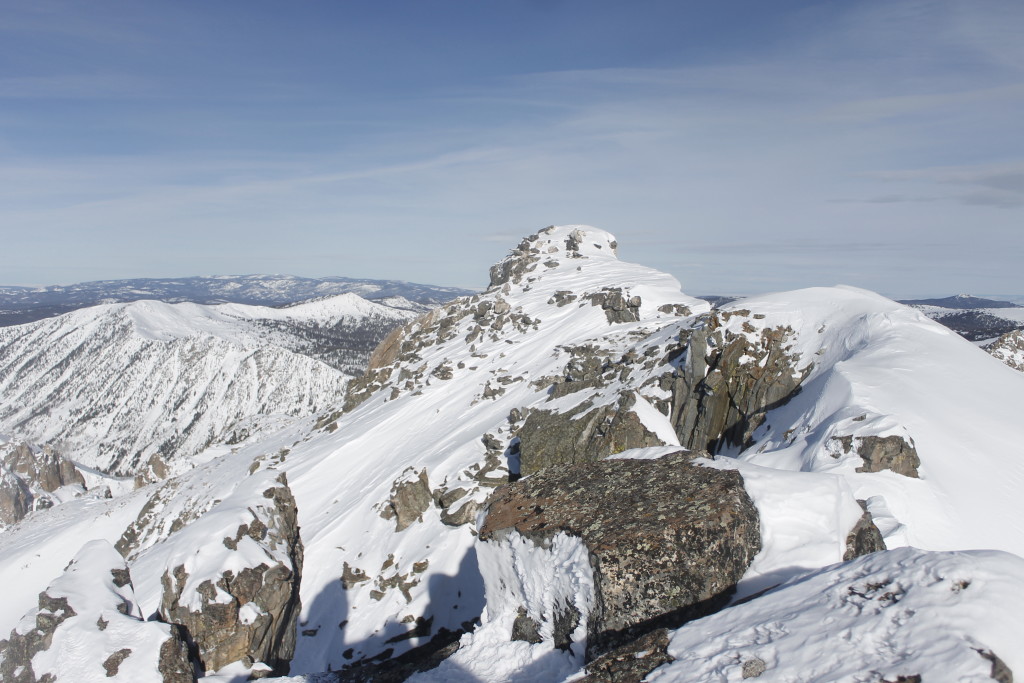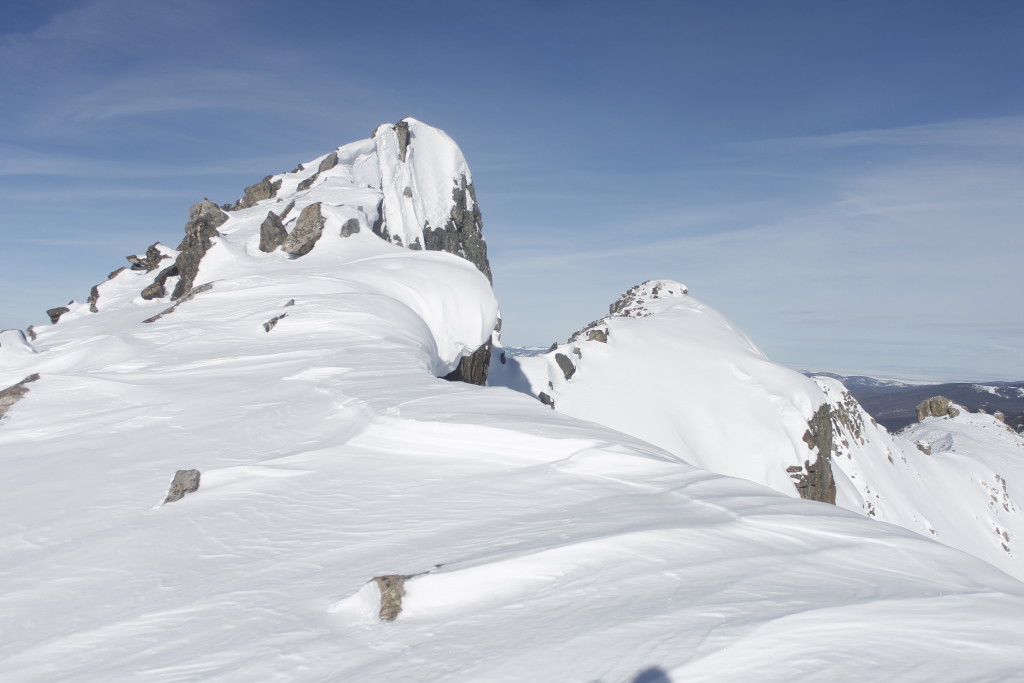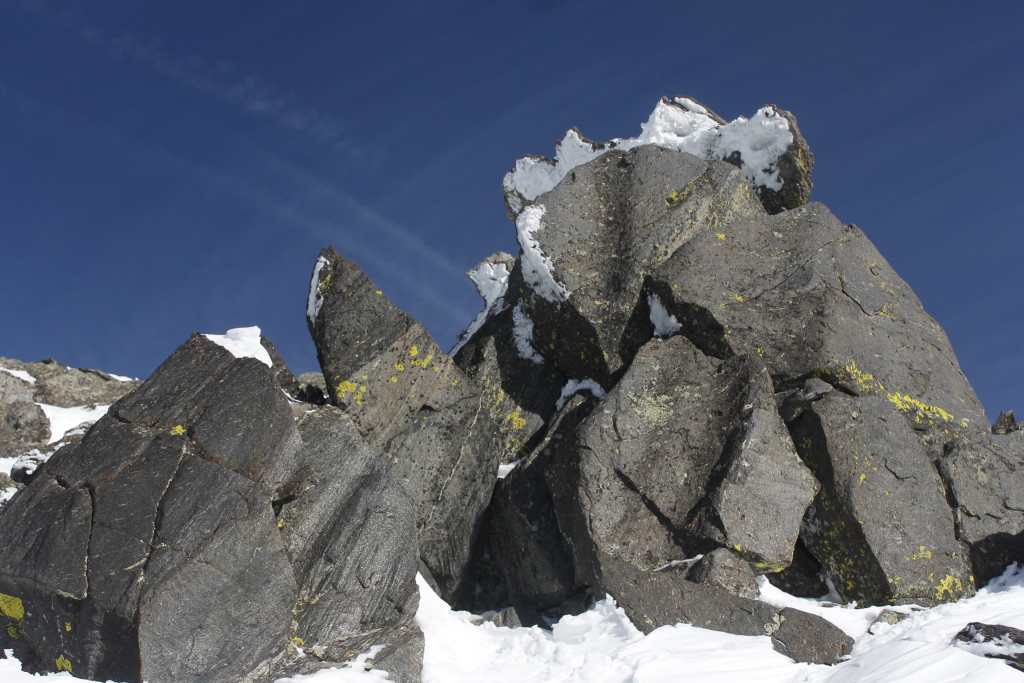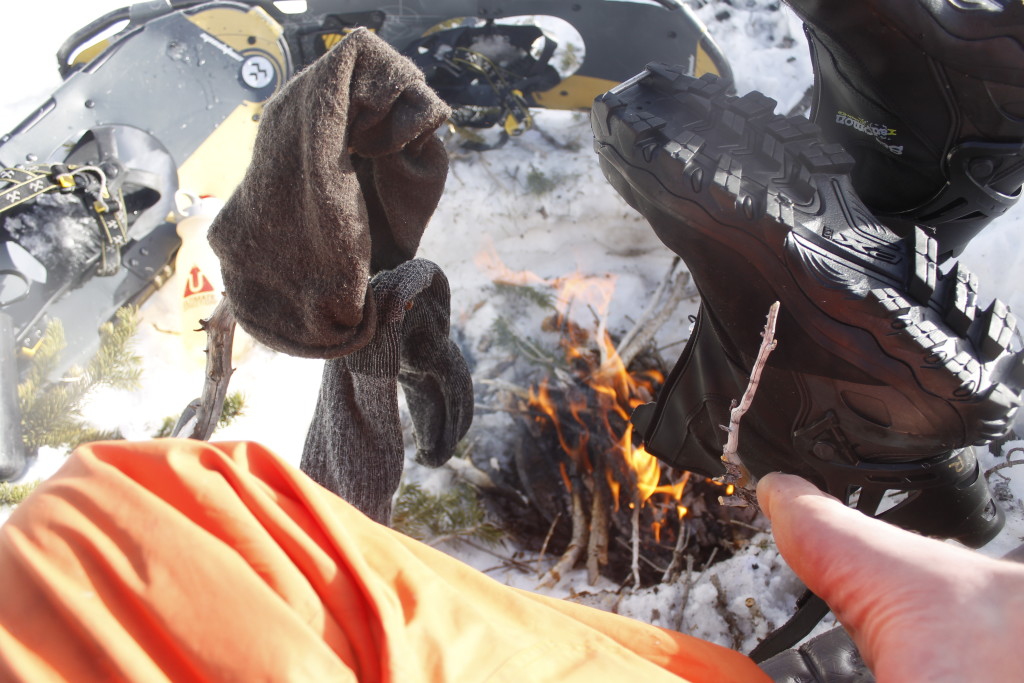Everyone has a plan until they get punched in the mouth.”
— Mike Tyson.
Cold was in the air already, an omnipotent all penetrating wet. It was in the slick on the road, the low gray sky, the close ranks of firs and hemlocks — a billion silver droplets on the needles, droplets in the bracken, on the grass. Spotted yellow maple leaves fell heavy with little ceremony, plopping to the pavement, plastered on.
A whisper of diesel lingered from the bus that had just dropped me on the empty stretch of Highway 101 beneath the Sol Duc Valley. I hustled across the yellow lines, pushing my road bike. The full pack was a nightmare on my spine. I regretted this trip before it stared. Yet, there was no choice.
OK, there was a choice. There was a choice between the 15-mile bike, 9-mile hike — and staying home for another “get things done weekend.”
The last “get things done weekend” had began with good intentions of housecleaning, writing canning fruit for the winter (new hobby) but my attention span got sucked out through my internet connection and run over by the news cycle. My hours of productive labor became joyless hours of content consumption and self-loathing. The idea of repeating the experience for another weekend was a nauseating one.
No. I needed a kick in the ass. I needed some adventure. If that adventure required cold hands, shivering and soggy spirits, hopefully I’d at least learn something along the way.
Most of those lessons would come painfully, of course, but the kayak pogies were an exception. Putting pogies on the bike handlebars actually works pretty well, I learned. Fingers were firmly connected with the gear shifts and brakes, yet they remained encased within their warming shells of neoprene. I didn’t need to worry about wetting my gloves or mitts before I hit the trail.
My decision to wear a trash bag as a kind of skirt while cycling kept a great deal of the moisture off my pants. I was, however, developing a wet zone above the knees. I pedaled slowly.
Salmon cascades
My trash skirt and bike helmet certainly made me among the more fashionable visitors at the Sol Duc River salmon cascades. Several vehicles were pulled along the roadside near the prominent overlook. A small crowd had gathered by the river to watch the huge fish leaping up at the series of surging falls.
These were coho salmon returning to their spawning sites from the sea. Though I had seen salmon in the rivers before, I had never seen such perseverance. Fish after fish flew above the surging water to try and clear the four foot ledge into a side pool partway up the falls. Almost all of them fell backward into the foam that they had leaped from.
An instant before they hit the water, the fish would whip their bodies, thrumming with the tight, directed power of a vibrating string. For a couple fish that landed just below the top of the falls, this Hail Mary, was enough to overpower the current for an instant and push them into the pool on top. Others flailed, pathetically to their sides, flopping back down into the maelstrom.
The largest salmon seemed to have the best luck. They took the greatest leaps. Even in shallow water, they could grapple their bodies to the stone and dyno like rock climbers against gravity.
The tumult of the cascades annihilated all noise from these struggles. It was as though the standing wave at the base of the falls was the flywheel on an enormous pitching machine. Instead of baseballs flying up, there were silver 20-pound fish, arching noiselessly from the river.
Satisfying as it was to watch the salmon make it to the first pool, I didn’t see a single one make it past the even higher leap that came next.
They had eaten their last meals long ago, were running down their gauges toward empty. The top of the falls was their Hillary Step, a final test that their years of struggle in sea and river had built up to. Each failure brought them closer to the possibility that they would die without spawning, that this season would be the last chapter in their ancient genetic story.
It was painful to watch the fish jump off from the redoubt they had fought so hard for. I held my breath every time, only to watch the fish tumble out into the main current and — fighting, still fighting — fall all the way back to the bottom of the cascade
It has never been easy to be a salmon, though this moment in history may be their greatest challenge yet. Years of dams, development, over harvest and global warming have devastated the old runs, shrank the size of the fish themselves. Perhaps the fish at the cascades would have been bigger and stronger if the Pacific Ocean, wasn’t still reeling from the enormous “blob” pattern of unnaturally warm water that began in 2015. The phenomenon killed off much of the krill that salmon feed on.* If not for the failures of our species to respect life on this planet, there might have been a different scene at Sol Duc.
Maybe then, I would have seen some of them complete that last leap.
The river thundered on.
The cold and the beautiful
I got back on my bike and continued up the wet road to its end.
15 miles from where I’d started on Highway 101, I locked my bike and shouldered my pack. I began walking toward Sol Duc Falls. Plenty of people were walking with massive cameras, talking in several languages. There was a family with brown paper bags out looking for chanterelle mushrooms growing under logs.
I went off my route briefly to admire the place where the river falls sideways into a deep chasm (no salmon would ever make it this far.) It occurred to me that if I were really smart, I would just turn around here and then catch an afternoon bus back to Port Angeles. The falls and the salmon cascades were enough fodder to make up a small, successful, low carbon trip with moderate suffering.
Haha. Moderate suffering. Suffering would be abundant. It occurred to me that if suffering were some valuable commodity like goat cheese or maple syrup, I could start a nice artisanal business for myself.
Try Wandering Tom’s latest, Homemade Suffering! This 2017, limited release small-batch edition has strong notes of cold and wet — a bold contrast to its themes of back pain and numb extremities. It goes great on pancakes.
In order to gather the proper amount of suffering on this trip, it wasn’t good enough for me to just muck around below tree line; I needed to get to the alpine zone where the good stuff was. My Parks Service overnight permit was for the Heart Lake camp area, which happens to be at 4,700 feet, nine miles up the trail. It was raining at the trailhead. I was told to expect snow by the time I got to camp.
So the hike began.
It is worth noting, amidst my morbid contemplations, that there were actually a couple of beautiful things that I noticed going up the trail. One of these was the deep gully that crossed my path, plunging down the slope toward the river. Plaited bands of aerated water splashed over the mossy rocks. Overhead, a canopy of warm yellow leaves on the vine maples. These small trees followed the gully in a perfect line. They flashed out against the dark boughs of the spruces and firs.
The generous amounts of rain at Sol Duc creates a habitat for verdant swaths of moss, goatsbeard lichen hanging off the branches, beads of water clinging to the hairs. Monumental firs stand dark against the light in their shining filigree of epiphytes.
I could look down from the edge of Sol Duc Canyon and see a river that thundered like a fire-hose, bulling against the walls, throwing itself off ledges, swirling through logjams and leaping up into the air in sheets of mist.
Where was all the water coming from? Everywhere. Every inch of the valley was saturated.
Half of the trail was a stream course. My tall boots deflected most of the moisture, but I sensed that it was beginning to make inroads. Some vapor-barrier socks would have been a smart move. The kayak pogies were a surprise success however. I attached them to my poles much as I would a paddle, creating comfy neoprene nests for my bare hands. This was literally handy, because I could take my hands out in an instant and work ungloved on some minor adjustment. It was far less time consuming than me having to take a glove or mitt off to work on something.
I took few breaks while climbing the trail. To stop was to lose temperature. If I put another layer on to warm up, I knew I would get it soaked and have one less piece of dry clothing for the cold night ahead.
When the weight of my fully-loaded pack became too much, I stopped with my pack on my shoulders, crouched into a ball to distribute the weight onto my hips and retain heat.
The rain rolled off my jacket onto the small of my back.
Making myself small for this 30 second interval, I shut out the hostile outside environment and breathed the dirt smell of the rotten log I was leaning against. This short break from struggle was an important way to ground myself, tending to my spirits in the same way I was trying to keep an even body-temperature. The micro-world below gave me a measure of reassurance that I didn’t feel when I contemplated the long miles ahead of me, or the sure to be hellish night ahead.
Hints at what that night would be like included the patches of white I began to see along the trail. There was just a faint frosting on the mosses, or in the shadows of the trees. It was still raining. The clouds hid the highest slopes of the mountains above me, but I’d get a glimpse of ghost white slopes above veiled in rain clouds.
The snow grew thicker as I climbed. It was still raining. I hiked through a goulash of wet snow. I thought of the several empty camps I had passed below tree line. Surely, these would have been more pleasant places to spend the night than what was in store for me in the high country.
Ah, but I still had lessons to learn up there; I still had a suffering quota to meet.
The trail crossed the Sol Duc again, but this time there was no log bridge. I tried to toss a couple branches into the river, but the current laughed and whisked them downstream. I ended up slogging through shin deep water to reach the other side.
After another half mile of goulash hiking I had another river crossing. I had to will myself to go slow, even as the cold water soaked into my boots. A fall would be a survival crisis, likely hypothermia. I reached the side and climbed on. Finally, the trail popped up at the bottom of a snow filled basin where the wind was howling. Chunks of slush and broken ice lolled in the gray, heart-shaped lake. I’d arrived at camp.
Outhouse Camp
The rain was one thing, but when the droplets were thrown by a thundering wind, it became something much worse. The outhouse, naturally, was the place to find relief.
I shut the door and threw on a fleece layer beneath my raincoat. It would be soaked within short order. I felt my jaw clenching up from the cold. If there was going to be a shelter tonight, I needed to get it set up fast.
The shelter was my tarp, which had served me well throughout the summer. Initially, I’d planned to use the rainfly from my tent as the upper level, but realized that this was a no-go because it wouldn’t stand up without the under-tent. A dumb mistake, but still salvageable, because I could use it as my shelter’s footprint with the tarp overhead.
Another problem: Even as I cleared away the snow from the shelter site, the rainwater would start to gather up below. I used my fire pan to dig a drainage trench, which helped somewhat, but only to the extent that I’d be sleeping in shallower water.
I set up the tarp as a flat rectangle that was a couple inches above where I would sleep. This was workable, unless the rain turned to snow, in which case the weight of the snow would collapse it on top of me while I slept. OK, I could try to rejigger the ropes so that the central guy-line was higher up.
BUT, my hands were freezing cold now. Untying and retying knots would be slow work. Light and temperature were falling. The longer I stood exposed in the face of the wind, the colder I became, the more difficult it would be for me to, warm up or to do simple tasks necessary for survival. The zipper on my rainjacket had blown open and rain was getting into my puffy layer.
The shelter was shit. I was going to be sleeping in a pond with the wind blowing through the whole night.
Should I take it down then? Well, at that point, even disassembling the thing would cost precious energy. The two river crossings would leave me in an even worse way before I got below tree line to set up shelter again. After I’d been through all of that, who knows how stupid and useless I’d be. It was going to be an outhouse night.
I lurched back to the narrow building and shut the door. I shed my wet layers and arranged my sleeping bag. The last time that I’d spent a night in an outhouse was in Colorado, where I’d used a roomy handicap-accessible building that gave me room to set up a sleeping pad and stove.
This building gave me five feet to stretch out if I slept on top of the toilet with the lid down. Gusts of wind send droplets of icy water in through the cracks in the walls.
Miserable as this sounds, I had piled on enough layers to maintain a damp warmth. I set my fire pan down on the edge of the toilet and used a flint striker to light a cotton ball, transferring the flames to a hexamine tablet, which gave me a small but very hot smokeless fire. The fire gave me boiling water for hot pea soup and contributed some toxic fumes to help deaden my awareness. I fed additional tabs to the flames as I ate, warming my little shelter as the wind outside thundered into the boards.
When the fire died, I got out my sleeping bag. I bolstered my sleep system with two reflective mylar bivvy sacks. One protected my insulation from the wet on the outside; the other bivvy went inside the sleeping bag to protect it from my own sweat and damp, marinating my body inside plastic.
I contorted myself so that I could lie down with my head resting on my pack, knees bent. This was more or less how I would spend the next 10 hours. Though supremely uncomfortable, I was warm. I listened to the wind, heard the droplets spattering onto the bivvy sack. I thought of the wretched tarp that I’d pitched outside, and how hellish it would have been to spend the night under it.
I was in the outhouse because I’d screwed up. My preparations were inadequate. Plans that seemed solid to me when I was beneath a roof in Port Angeles, were torn up by the mountain wind.
“Everyone has a plan until they get punched in the mouth,” Mike Tyson said.
He may have been talking about boxing, but the windswept campground was a place where punches came fast and survival required action to move at the speed of muscle memory and instinct.
I’d been able to afford the time it took to noodle and tweaking with my tarp during the months of summer hiking. The October weather was less forgiving. Now noodling with gear was the equivalent of lacing up boxing gloves while the opponent was already taking swings at me.
Cold and disorientation had landed like blows on my unprepared frame. Next time, I vowed to have a stronger system ready for the elements. Another option: I could have kept my lightweight system and camped below tree line. If I’d really wanted to explore Heart Lake and beyond, I could have marched up from a lower camp with a lighter pack.
Now I spent many hours in the half waking, half dreaming state, pausing to sit up now and then to stretch my cramping legs. I thought of the refugees of the world, what it was like to be insecure against the elements, utterly vulnerable. How outraged I would be, I thought, if someone turned me away from shelter on a night like this. Yet, our government routinely turns people out who face not only rain but bullets, not only cold but famine, whose struggles are not over when they get home — because there is no home. It is easy it is to be heartless to those in need when you have no understanding of what their suffering is like.
“I am grateful for this outhouse,” I murmured.
Rough trails, dark roads
The tarp shelter stayed up. It had rained all night, with just a little bit of new snow that alighted during the coldest hours. Perhaps I could have slept under there after all, but if I could have gone back in time, I still would have chose the outhouse.
The wind continued throughout my morning routine, blasting little hail pellets over the mountainside. I gathered some slush water in my pot and boiled it for oatmeal.
I wrung out my hiking pants, put them back on. It was a slog back to the bike, but I was in control of my body heat.
Throughout the hike down, I had fantasized about an imaginary clothes dryer that would be waiting for me at the campground/resort next to the Sol Duc Hot Springs. I would dry all my clothes and then buy a pass to the hot springs and rewarm my core, telling the story of my adventures to any bather who would listen.
Unfortunately, there were no clothes dryers at the resort. There was no Sunday bus service out to Port Angeles either. My plan had been to spend the night camped near Highway 101 and then catch a Monday morning bus back to town. As I contemplated another night of damp sleep, this option became less and less appealing.
Another option was to bike the 32 remaining miles to Port Angeles — a trip I was certain to finish in the dark. I stood for awhile thinking, even put my thumb out for a couple pickup trucks going down 101. Finally, I decided to stop waffling and start pedaling.
The section of 101 that goes along Lake Crescent is incredibly risky for bikes, as there are tight turns and almost no margin. I decided not to try it with a fully loaded pack in fading light.
Instead, I opted to take the Spruce Railroad Trail, which goes on the other side of the lake. The compromise here was that I would face long sections of loose rock and roots that were for mountain bikes, not the skinny tires I was riding that day. I would have to walk long sections of trail.
Even pedaling the pavement proved challenging, as recent winds had knocked several trees down over the path. Branches and leaves were scattered everywhere.
One saving grace: The rain had stopped.
As the paved trail gave way to dirt, I risked biking on some of the smoother sections. I had to stop frequently to clear out pine needles which got stuck between the wheel and bike frame. Finally, I crossed through the railroad tunnel at the east end of the lake, and got back onto paved road. The light was getting low.
I stopped in the village of Joyce to flick on my headlamp and taillight. This was the highway section that I’d been dreading most. There would be plenty of traffic, a narrow margin and dark pavement.
To clinch it all, my headlamp beam was dying I hadn’t packed extra batteries (stupid.) This forced me to take it slow along the bumpy pavement, fearing potholes and outstretched branches hiding at the limits of vision.
Another worry: Every once in a while I would look back and see that the taillight had flicked off for some reason. Unnerving, considering that this signaled my existence to oncoming trucks with the potential to blot said existence out on their front grilles. I’d stop and hit the on button again and start pedaling until I noticed it was out again. I haven’t had the problem since the trip, so I don’t think it was battery-related. Whatever it was, it wasn’t helping my relaxation.
I’d hoped that some of the fears and hardships would diminish once I reconnected with the bike path, away from traffic. Not so. The trail was covered in leaves, which made it difficult to distinguish the pavement from the edge of the forest. The dim headlamp forced me to bike slowly. Twice, I got disoriented and biked right into the woods.
My most epic fall came when I biked past a roadside construction site. I saw no warning sign, just a sudden drop off right in front of me. I hit the brakes but it was too late. The bike went over an 18-inch drop and landed hard on the rocky substrate. I fell over and the bike went on top of me. I issued a stream of oaths, got up and dusted off.
I had to readjust the bike wheel before I started pedaling. I was ready to be done.
Finally, a couple miles later, the trail ended at the suburbs west of Port Angeles. There was street lighting, the happy glow of televisions in the windows of warm houses. I could hear waves pounding on the beach below the bluffs nearby. A hilltop vantage point gave me a view of miles of lights, stretching out along the dark waters of the Strait.
Blobs of brightness by the water eroded to disparate sparks of illumination as civilization climbed the hills. And then there were the mountains where darkness reigned again. My time up there was over for now, until my next journey when I hoped to return wiser and better equipped. I was happy to follow the orange road, street lamp by street lamp, the rest of the way to a warm bed.
Sources
* Information on salmon stock decline can be found here: http://www.oceanfutures.org/news/blog/salmon-stocks-trouble-pacific-northwest
http://www.idahostatesman.com/news/local/news-columns-blogs/letters-from-the-west/article73268602.html
